9th February, 2024
The Year of The Dragon – The Cusp of a New Cycle
“January 23, 2012 to February 9, 2013 marked the Year of the Dragon. According to tradition, the dragon is the fifth animal in the Chinese zodiac and symbolizes loyalty — it is noble, gentle, and intelligent, but also tactless, stubborn, and dogmatic. “ New York Public Library
2012 was the year a nascent community from different disciplines and interests – IT engineers, journalists, a pharmacist by degree, a librarian, academics, artists, teachers, students, nature lovers, heritage proponents, authors, film makers, lawyers, the tomb keepers, the former residents of the Kampong at Lorong Halwa, a cartographer, descendants of the stones and the local and international media – emerged, each to play their part in generating awareness that there is this 100 year old municipal cemetery called Bukit Brown, that sits in the center of our island where the stones tell stories of the past and the flora and fauna breathes life into it. And the government wanted to build an eight lane highway that will cut Bukit Brown in half, cleaving apart 100 years of heritage, habitat and history.” It is a rare original WWII site that saw one of the last and fiercest battles on the rolling hills of the land.
Chapter I: How it began…..
The first official engagement with the government under the Ministry Of Development went badly. While the Minister was abroad, his senior civil servants were engaging with civil society on a date to meet him. We wanted a consultation and an opportunity to ask what were the alternatives that had been considered.
By the time a date was found – it took about three weeks – the circumstances of the meeting had changed. First there were “outsiders” those in heritage circles but Bukit Brown was not necessarily a priority. This was not the scenario we had envisaged when we met at the Nature Society’s HQ at Geylang. We came from roughly seven different organisations/communities including one newly minted, all things Bukit Brown, feeling their way in tentative steps through civil society.
The response to the meeting or more accurately the briefing by the then Minister of National Development was an immediate media statement calling for a moratorium on the roadworks signed by The Nature Society of Singapore(NSS), The Singapore Heritage Society (SHS), Post Museum, Green Drinks, The Rail Corridor, API, (paranormal group) and all things Bukit Brown.
Both NSS and SHS had led the email negotiations to pin down a date and an agenda to bring up to the Minister. And the way the emails were going, we knew that was a 99 percent chance, we would not get the meeting we requested. Instead the Minister announced the plans from exhumation to construction of the highway in a PPT, with a concession that the whole process would be documented. A suggestion that a heritage advocate had suggested to the CEOs of URA & LTA when they invited him for a morning prata to ask his opinion. It was indeed a prata flip. Aside from the seven groups, there were heritage bloggers, representatives from clan associations, The Peranakan Association government agencies, , the Preservation of Monuments Board and the National Heritage Board.
The fact that seven groups from civil society including the two most established the nature and heritage societies, issued a statement disagreeing at the haste the decision was reached without genuine consultation, made headline news. Bukit Brown was after all, one of our oldest Chinese cemeteries and the mother of all cemeteries with many remains reinterred there because of major developments where they were first laid to rest. Their burial grounds , had made way for HDB estates such as Queenstown, and so in the past time and time again, the dead had to make way for the living. This was different, an 8-lane highway. In today’s context with climate change a critical and existentialist issue, questions would have been raised why are we encouraging car ownership? Could nothing be done with the then Lornie Road, only eight years in existence ? They were raised then, almost prescient. Back and forth, like a ping pong game, with the ball falling into the government’s side of the table in a staccato volley. We were called naysayers, unsympathetic to motorists and asked to offer solutions to solve traffic jams.
Then the government announced that they had taken on feedback and as a concession to civil society realigned part of the highway as a bridge. It was the most natural of realignments as the previous plan would involve building the highway into a valley. What had happened was that the Nature Society of Singapore had submitted the proposal independently to allow space under the bridge for animals to pass and shady plants that did not need much sunlight, It did save a few graves from certain “death”. The concession by the authorities was much lauded in the media as an indication that the government of the day was not recalcitrant and was responsive. With that, the first chapter of our journey came to a close.
Chapter II Letting Go……
Two communities, Post Museum and all things Bukit Brown moved on and forward, to continue to conduct public guided walks to spread awareness, the latter community branched into themed walks such as World War Two at Bukit Brown hooking up with a war archaeologist from the UK, whose family was stationed in Singapore because of his wife’s career. He had found himself living on the doorstep of the battleground around the black and white houses in Adam Road and later explored the Mount Pleasant black and whites the Japanese had occupied. He started to conduct WWII guided walks detailing battlegrounds that covered the Island Club links into Bukit Brown proper including the names of soldiers who are still missing and their last known locations. Their remains may very well lie under the highway – grist embedded in the concrete – even as their names are acknowledged at the Kranji War Memorial.
Outside of Bukit Brown, Post Museum which is an arts group helmed by a husband and wife team, secured a grant for an exhibition held at SAM, the Singapore Art Museum. They were to curate other exhibitions at the Substation and the exhibition space in Bencoolen Street of La Salle College. And they have taken the Bukit Brown “index” to the USA. Days before the exhumation exercise was to start, they arranged a candlelight remembrance and lit up the entrance into Bukit Brown. That entry into the cemetery is no longer, absorbed now into the Lornie Highway.
Particularly poignant in Post Museum’s first exhibition at SAM was an installation where the names of the deceased who had to make way for the highway were written in chalk on a big wall by volunteers and the public, with a photo collage of some of the volunteers at their special/favourite spot in Bukit Brown. The GOH for the opening was Ms Jane Ittogi, the present First Lady who was Chairman of SAM then. Ms Ittogi was to later be the GOH for a brownie event, – brownies, that’s how the community of volunteers under the banner of all things Bukit Brown are known to the public. It was to be a much bigger event over a weekend with exhibitions of artifacts including a letter written in romanised Hokkien, presentations on nature and heritage, and a screening of a documentary, Light On Lotus Hill about the efforts here to assist in logistics in support of the Sino-Japanese war. It was a collaboration with the Chui Hway Lin Teochew Club. It followed very soon after atBB also curated the first exhibition at The Substation partnering the Singapore Heritage Society and the Sub. In the meantime, an 8 part TV series called “History from the Hills” debuted with Bukit Brown as the central space, telling the story of Singapore from pre colonial times to independence. It was to be dubbed into both Mandarin & Malay in years to come.
Along the way, the new kid on the civil society block, picked an award from the inaugural Singapore Advocacy Awards celebrating the best and most promising in civil society. It was more than encourage, it sealed, resolved.
But it was the international media who took up the gauntlet to source alternative views, different angles to the issue The BBC, CNA, and Reuters had correspondents based here. Brownies were interviewed on air and quoted in print. They sent in questions to the government but they had no comment. The Economist correspondent and the family of husband and wife with one young son and a mangy and lovable Singapore special lived near Bukit Brown. They treated Bukit Brown as their backyard and had joined the brownies in their explorations, “bush bashing “ together in areas tight with above and under growth. He blogged it in The Banyan. A Singapore artist and former photojournalist with the local media and her partner, a Pulitzer prize winner for journalism who flew in from New York for the Singapore Writers Festival, arranged to visit the site with brownies and an academic in tow, and somehow managed to gained access to the storage where the tomb artifacts of exhumed graves were stored and snapped a few choice photos. And so that was how Bukit Brown Cemetery and us found ourselves in The New York Times in a feature article.
Chapter III Gaining Traction & The Message in the Bottle
“People with Chinese zodiac dragons born in 2012 have great vision and ambition. In addition, they are full of patience and persistence. Therefore, they can achieve success in their career field easily. They are bold people full of justice and energy, and they like to help people who are in trouble. They have good interpersonal relationships, because they care about friends carefully. They have a unique style and can give everyone an interesting chat when they are in a low mood.”
We are not sure that accurately describes the community but time has proven we are patient and persistent. An application was made to the World Monuments Fund, to have Bukit Brown Cemetery recognised as a historical and heritage site under threat from an impending highway. We got it, the first site in Singapore to gain this recognition. It was for two years 2013 an 2014. When the news broke, most of us were at a temple dinner.
We held a media conference in Bukit Brown and had fairer coverage. Meetings followed with the National Heritage Board, there was to be no u-turn for the highway, so we simply went with tapping grants from the Board, and the result was a book, WWII@Bukit Brown launched in 2016, an anthology of stories with contributions from heritage enthusiasts who charted the military movements from both sides of the divide. And the brownies themselves shared stories they researched and encountered on the grounds of Bukit Brown. But the heart of the book were stories from the descendants whose young men had been taken away by Sook Ching – and the equivalent of a pogrom. It also included other tragic deaths, the story of how an elder sister and also an aunt, was killed by shrapnel from a bomb, protecting her mother, a younger brother and a niece. She was only 19 years old, with a steady boyfriend. The chapter was called “ Lost Promises” And that was exactly what WWII had wreaked on the island, a palpable loss.
We followed the book with Wayfinder@BukitBrown, a curated trail with directional signage and information boards for graves both prominent and poor in easily accessible areas, by pathways and areas where descendants clustered around a set of tombs had their tomb keepers maintain the tombs of the ancestors.
And sometime after Wayfinder was launched, we witness the sea burial of the unclaimed remains of those exhumed for the highway into the waters with a message in a bottle. By sheer dint of fate, a last minute claim was made on the eve by a friend of the brownies, so one less went into the waters. The same waters where their ancestors once sailed through perilous journeys borne by uncertain winds and currents until they reached safe port in “Sin Chew” a sobriquet popularised by the poet Khoo Seok Wan as the “island of stars”; their first glimpse when they arrived at night, the lights from the vessels, necklaced the island. Khoo was himself affected by the highway. The Sun Yat Sen Memorial Hall made a claim for his tomb. So he is memorialised, ironically by his tombstone.
Chapter IV It Won’s be to Long, now ……..
IT WON’T BE TOO LONG: THE CEMETERY (DAWN & DUSK) by Drama Box staged as part of the Singapore International Festival in 2016 made a profound and powerful impact on the community, and gave the brownies both inspiration and validation.
Every year, we get requests from students doing their final papers for interviews or to be part of the documentary projects from Mass Comms students, and the occasional foreign media looking to refresh their stories of the country they have been posted to, just how does a cemetery tick the boxes of community, of heart, of a shared and painful past, of rebuilding, of the forging of a new found identity ? Like patchwork the different threads go into a blanket of stories, still being added to.
Over the years, we have received requests to make presentations from the tertiary institutions such as from the LKYPP, the soon to end Yale-NUS, to complement the walks. From schools to community and adventure groups, opposition parties and establishment, we walked with them and guided in a truly inclusive space. So the public guided walks continue to be our backbone even through lock down as we secured permission from STB, through an intermediary who believed in our efforts and had a long standing working relationship with STB. Boy, did we need the fresh air and sunshine, as we breathed maskless. But we were closely monitored for safe distancing and numbers.
We are thankful that all restrictions have been lifted. In the two years of covid, Bukit Brown was “under maintained”, so parts have grown lusher than before. Slowly but surely tho’ regular maintenance is being implemented as before. Not unusual now to see groups of three or four workers cutting the grass by the paths. So is life back to “normal” now?
Now on a Saturday, if you are lucky you may encounter a trio dubbed as “The Three Amigos” which includes a tomb keeper and sometimes a young warrior woman carrying kilograms of water for cleaning and it is said she keeps the amigos honest. Together they explore Bukit Brown and venture into the adjoining cemeteries of Lao Sua, Kopi Sua and Seh Ong, every Saturday and stop only for the CNY and Xmas holidays or when they are away for work or family. Sometimes they have “guests” with them, they are descendants who have requested assistance locating their ancestors. The reuniting of families to their roots is what keeps them grounded and going, bush bashing, recalling mysteries they encountered that now have answers, and they grow our compendium of a past lives brought into the present. Enough for another book, but that’s for the future. This year we consolidate.
We have been walking – walking the talk – now in a complete 12 year cycle of the Chinese astrological animal, the dragon, the one mythical creature among the twelve. Perhaps, there is something symbolic in that, that holds hope and a promise we are closer to our mission to protect Bukit Brown for future generations; descendants are returning to look for their ancestors, to connect with their roots, more young people are researching their family history, as always we “connect” them to their roots and to us, then back to you when we share their stories online in our FB groups, blogs or in our presentations. A virtuous and vibrant cycle.
As we welcome the new wood Dragon, we are in the process of working on version II of WWII@BukitBrown, It has been six years and during this time we have uncovered more stories and new material has been shared with us exclusively on the Japanese battle plan under General Yamashita including his annotations on the maps of what was to become Synona-to. We are grateful we have this exclusive through the generosity of a private, independent researcher of all things Japanese, who has focused on the war years from primary sources.
And we are relaunching Wayfinder, so coming your way is Wayfinder II. More tombs, more areas covered, to be launched with instagram interactivity. We hope to launch phase one covering the original Hills 1 and 3 with add ons by June’24. The designers have done the first two focus groups to find out what worked, what didn’t and what kind of content independent walkers are interested in.
If you have visited Bukit Brown and would like to take part in the next focus group, please contact our designers thestudiosonder@gmail.com.
Subject: Wayfinder II
Information needed: Name, Age, Gender, phone number and Status: student, working, not working or retired. The information is needed to ensure a representative demographic. If there are too many applications, the designers will only be able to contact you if you fit the demographic, and apologies to those who could not be accommodated this time and thank you!
As always on our big projects we bring in the Singapore Heritage Society to work with us, and they will be with us on the book and the wayfinder. On that pragmatic note, all things Bukit Brown would like to bring you back to what the Year of the Rabbit had visited upon the community. It was a year of realigning back to face- to- face meetings with the National Heritage Board who organised a focus group discussion with the Singapore Heritage Society, all things Bukit Brown, the Nature Society, descendants, the inter government agencies with oversight over Bukit Brown and educators. There is something afoot that would be announced, shortly .
Chapter V Farewell 2023 and Welcome 2024
In 2023, we count our collaboration with Temenggong-Artists-in-Residence, our most productive, enjoyable too, when we participated in their Zhong Yuan (aka Hungry Ghost) Festival. On opening night, their GOH was overheard remarking, “this is a living museum” as he gazed upon the grounds of the black and white houses, perched on a hill facing the old port, resplendent with grave artifacts above and below. Twice, he remarked “this is a living museum” Minister, there is one right in the center of Singapore, still vibrant and teaming with nature and humanity.
The country was galvanised by the Presidential elections. Perhaps the community had a soft spot for President Tharman, who had visited Bukit Brown when he was Deputy and Finance Minister then, with the documentation team and all things Bukit Brown. It was one stormy and lighting flashed afternoon when his entourage arrived. He and his wife Ms Itoggi took shelter at a home of a brownie. We were gratified they returned after the storm calmed, and went with the original itinerary covering four out of five hills. We finished late as the skies darkened and there was no light left ‘cept from our phones. And he asked us a question, and that question gave us hope.
So we look towards the Year of The Dragon with hope and our gratitude to you, our supportive community, we greet you with our very best “Huat” wishes, may the wood dragon not breathe fire unto himself! It means, continue your conversations, discussions and debates on Singapore Heritage – Bukit Brown Cemetery, but be polite and respectful, less the Dragon boots you out.
Be safe, be healthy, wealth in terms of currency ain’t what it’s cut out to bring. It is the prosperity and good fortune of living a virtuous life, lending a hand to those in need, looking out for your neighbour, to be kind – these are rewards within themselves. This is what we have learnt from the stones of Bukit Brown, and they have many lessons yet to give.
28 October, 2023
by Catherine Lim
It was the April-Jun 2012 edition of Nature Watch, the Nature Society of Singapore (NSS) bi- monthly magazine of hot topics. This one featured the position paper and recommendations for Bukit Brown Cemetery together with a ed-op piece and photo feature titled “Spirit of Bukit Brown” The latter by Ilsa Sharpe, who was on a visit from Perth, which was now home. A revisit was undertaken in the light of news following the announcement of an eight-lane highway that would bifurcate the cemetery.
First Dr. Ho Hua Chew presented some of the reasons for preservation:
ECOSYETEM SERVICES
1) Carbon Sequestration
While our eco footprint is on par with that of first world nations then, “Singapore should take up the challenge of becoming not just a red dot to the world, given that the crisis of global warming has intensified to an alarming degree.”
12 years later climate change is an existentialist crisis. Globally, governments have had to face extreme weather devastation from blistering heat to numb blinding cold. Mitigating climate change requires new sustainable and equitable goals. There is a place for Bukit Brown in this.
2) Natural air-conditioning. If you have ever been to Bukit Brown, then you will have felt what I mean. Nothing more to say.
3) Rainfall sponge. It rains often in Singapore, but it also evaporates fast in our concrete jungle, the wooded areas of Bukit Brown, retains water, and “allow a slower percolation of water into the ground.” This helps prevent or reduce floods.”
Biodiversity
With the formulation of the Master Plan for the Conservation of Nature which was published, NSS had been monitoring the bird life in Bukit Brown.
Their highlights:
94 resident and migrant bird species have been recorded. That’s 26% of 364 bird species recorded under the NSS checklist in 2007. “Impressive” is how Ho describes this figure, given the landscape is mainly woodland.
Nationally threatened birds include the White-bellied Woodpecker (critically endangered and rare). The Spotted Wood Owl and Grey-headed Fish Eagle all in the same category of rare, and critically endangered; 56 species listed in the Red Data Book is 27%, making the cemetery an important site for biodiversity conservation.
Forest Birds – Extended Habitat
Bukit Brown serves as an important habitat and foraging ground for many forest species. Their presence which includes the Malkoha, Asian Fairy Bluebird and Black-headed Bulbul is probably due to over-crowding, especially at the Macritchie Forest part of the Central Catchment Nature Reserve (CCNR)., opposite Lornie Road where Bukit Brown is located. There is also a disconnect with the reservoir and the golf course at Sime Road to the west, and the dam and open ground to the east.
From Bukit Brown it is “a skip and a hop” to the Southern Parks and Ridges. With the cemetery situated south of CCNR, it acts “as a bridge” to include Botanic Gardens to the Istana and Fort Canning. Bukit Brown facilitates as close to a contiguous route for forest birds to the South.
An interesting record of a Large Flying Fox was sighted close to the expressway transect area. A common sight in the past, it is now nationally extinct. It was probably a visitor from Johor or Indonesia. It is a rare sighting which indicates Bukit Brown holds promise for other wildlife apart from the birds.
Since this article was written, there have been sightings by the tomb keepers of the rare Sunda Pangolins as reported by all things Bukit Brown.
To summarise the impact of an eight- lane highway:
The expressway approximately 2 km in length cuts through the area close to MacRitchie Forest, going diagonally across the only big valley with a flowing river, and I would add the most beautiful part of Bukit Brown, with thick woodlands along the shoulders and surround areas on both sides of the valley.
Most of these will probably be wiped out by the construction of the highway. Most of the forest species which used Bukit Brown as a launching pad for foraging will lose their habitat because of the damage and destruction, wreaked. Forest birds are not long-distance flyers. The proposal for the 600 meter “vehicular bridge” although allowing for the river to continue flowing, will with its massive width cast a huge shadow underneath. Deprived of sunlight, the plants will wither and die.
In, 2012:
The Nature Society of Singapore recommends and advocates:
The whole of area of Bukit Brown be designated as a heritage park, with cultural and nature/ecological components integrated into one entity. This also allows for other recreational facilities and activities that are in harmony with the dual-heritage dimension of the park. Such activities include horse riding strolling, hiking, cycling and more. The heritage park should be proposed to the UN as an UNESCO World Heritage Park to draw the tourists – if Singapore ratifies the UNESCO World Heritage Convention. “
On May 15. 2014, having ratified the convention, the Botanic Gardens was inscribed as our first UNESCO Heritage Site.
In 2023, all things Bukit Brown, advocates and recommends that Bukit Brown Cemetery be considered for inscription as the twin to Botanic Gardens, following its success. Also, a cultural site, it tells the story of our migrant nation, embedded with exquisite and simple stonework, with inscriptions that speak of revolution and peace, and represents tangible records of ordinary times of ordinary lives from Coolies to Capitan Cinas, in colonial times.
One of the rare battlegrounds from WWII which are still intact in parts, despite the highway which cut through the last known locations where soldiers were recorded to have fell. There are mass graves from WWII still not uncovered.
Lest we forget.
This will be a fitting remembrance of our war dead, a memorial and a national heritage park.
Remember Where We Came From
“We are Singaporeans together on a small island. We are anchored by our emotional links with family and friends and by our shared sense of our history, and our common destiny. We are not just here, materialised from nowhere, appeared out of a Transformers movie, maybe, we came here somewhere, sometime there was a history to it and it is crucial to remember where we came from, how we got here”
PM Lee Hsien Loong, National Day Rally speech, 2011
~~~~~~~~~~~~~~~~~~~~~~~~~~~~~~~~~~~~~~~~~~~~~~~~~~~~~~~~~~~~~~~~~~~~~~~~~~~~~~~~~~
There is a Chinese saying, ” 飲水思源” translated, “remember the source of the water.”
Horse-riding and strolling, extracted from Nature Watch 2012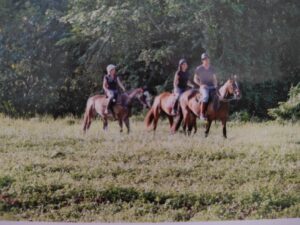
Intertwining Guided Walks of History, Habitat and Heritage
It’s like a three- in-one and atBB has recorded over 20,000 participants to such walks.
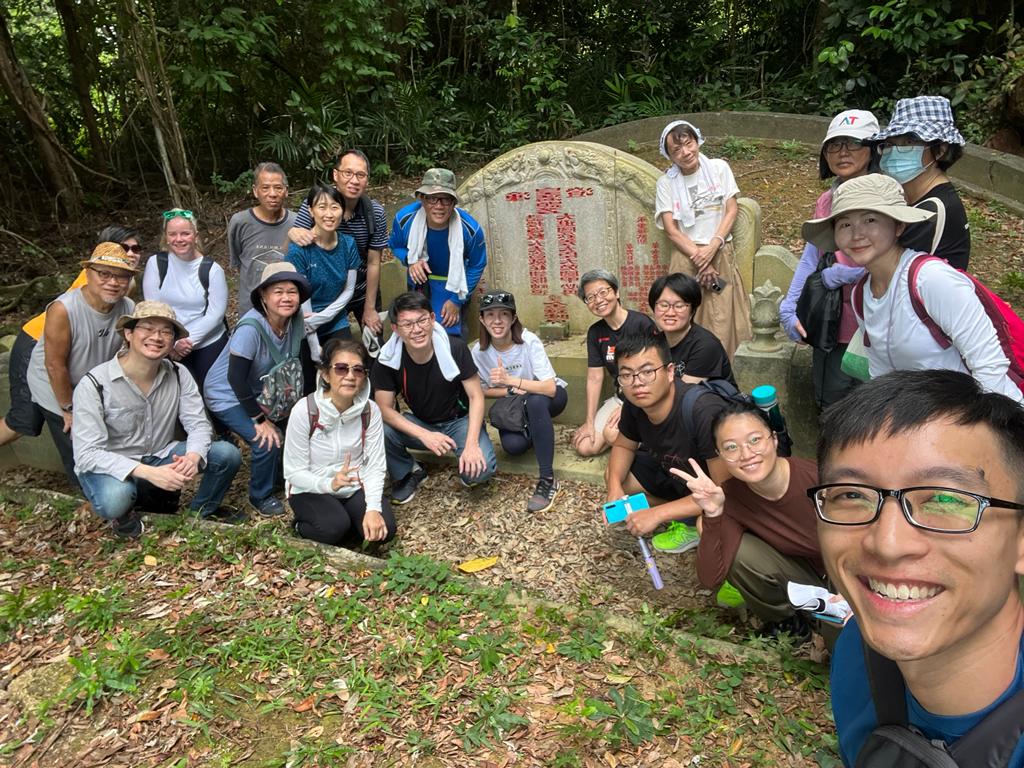
The grave of Tan Kim Ching. Kapitan Cina, Special Envoy in the Siamese court, scion of Tan Tock Seng
This blog post is extracted and adapted from a 2012 issue of Nature Watch. with thanks to the Nature Society of Singapore especially, Dr. Ho Hua Chew. Coming up “ The Spirit of Bukit Brown” by Ilsa Sharp.
A stopover at the the triple Wee tombs with a matriarch buried in the center flanked by her son on her left and daughter in law on the right. This was to familarise the group on material culture and what it represents, from protection to insurance for future descendants to be taken care of.
Catherine drew attention to the magnificent trees surrounding the junction of Hills 3 & 2 & 5, hosting birds nest ferns and bats.
We began proper at the grave of Tan Chor Nam aka Tan Ah Chye, founder member of Tong Meng Hui, and who subscribed to Sun Yat Sen’s vision of a Republican China. His grave marked by colourful crotons in its surrounds.
As we turned into another corner, the cluster of Cheang Hong Lims’ family, all relocated from the family burial grounds in Queenstown, probably to build our first HDB estate. Fabian spoke primarily about CHL and his beautiful and intelligent eldest daughter Murial who was made the executor of his vast estate and fortune, the subject of family feuds and infamous court cases.
Passed by the Instagram-able , Sikh Guards tomb, with a mention of the practice of “live” graves. And proceeding to Tan Boo Liat great grandson of Tan Tock Seng, and his legacy that continues the family tradition of philanthropy: the villa on a hill at Pender Road, he built in memory of his grandfather and named Golden Bell, meaning Kim Ching. A fervent advocate to ban the sale of opium, the scourge of addiction among the already impoverished coolies, he set up rehabilitation centers to help them kick the habit.
Tan’s neighbours are the triple Pang tombs, with husband and wife in the center, flanked by both his grandmother and her mother. They must have been close. His grandmother had vowed to be vegetarian, in exchange, the “gods” were to ensure that every member of the Pang family, survived WWII and came back safely, and they did. She is buried as a nun in a sitting position.
As we walked by Oh Sian Guan’s beautifully carved grave – he is the great grandfather of Kevin Kwan who gave us Crazy Rich Asians – we stood a minute’s silence, for Richard Hu our longest serving finance minister who passed away the night before. He is also part of the extended family of Ohs, Kwans’ and Hus’.
We ended officially at the grave ofTan Ean Kiam, philanthropist, founder member of the gentleman’s club Goh Loo – My Humble Abode – who died in the first year of the war, of a heart attack, or was it outbreak, to see all that the Chinese businessmen and many of them bankers, had built up in the economy, just decimated by the Japanese in the war.
He penned his own epithet. loosely translated:
“It doesn’t matter where I am buried
When the coffin covers me, that is my quilt
I am home.
It is a homage and comfort to all who had battled seas to arrive in Sinchew, Selatpor – old names for Singapore – and never made it back to the motherland.
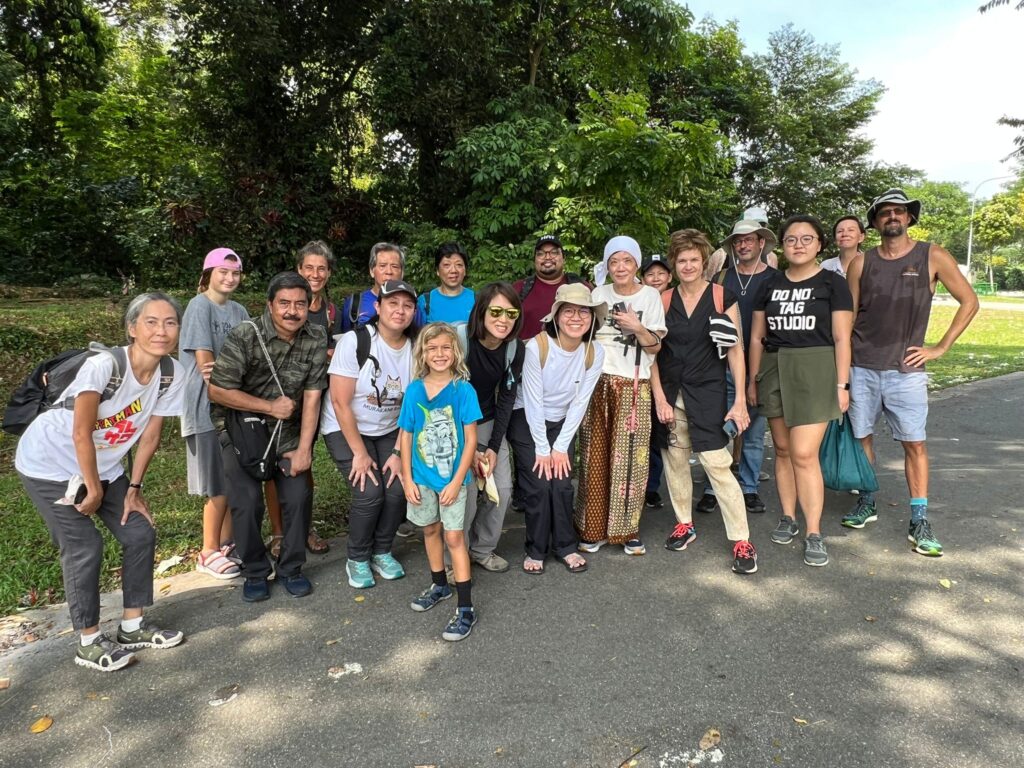
Thanks for coming and being such a great group of participants, especially the boy who kept me occupied while Fabian held court.
Considered the foremost authority on Raffles, the National Library Board has acquired the collection of Dr. John Bastin’s more than 5000 materials. 38 of which have been curated for public viewing on the 13th floor.
The exhibits both showcases and makes accessible NLB’s existing Singapore and South East Asia Collection which “form an important nucleus of works on early Singapore. “ The rare materials collection is conventionally the preserve of academics, perhaps perceived as” high brow” located as such on the 13th floor.
But this collection is curated with ordinary Singaporeans in mind with both the personal – a hand written letter by Raffles to his cousin which more than hints at his displeasure with Farquhar – and the quaint – a book on Malay Poisons and Charm Cures – to the spiritual – an almost complete Malay translation of the the Anglican Common Book of Prayer.
But the highlight must surely be the leaflets which were air dropped in the 50s at the height of the communist insurgency in the jungles of Malaya, in an attempt to “persuade” – both by threats and propaganda – insurgents to surrender peacefully. These leaflets dropped by the thousands and commonplace then, have become rare. I have seen them once in a private collection. The NLB rare gallery showcases three pieces.

A 1955 Chinese New Year “special” designed to tugged at the heartstrings and homesickness at a time of celebration (photo Catherine Lim)
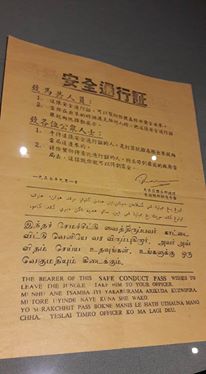
Leaflets in 4 languages which provided “safe conduct” upon surrender. An indication that the communist insurgency had support from all ethnic groups ? (photo Catherine Lim)
Other Highlights:
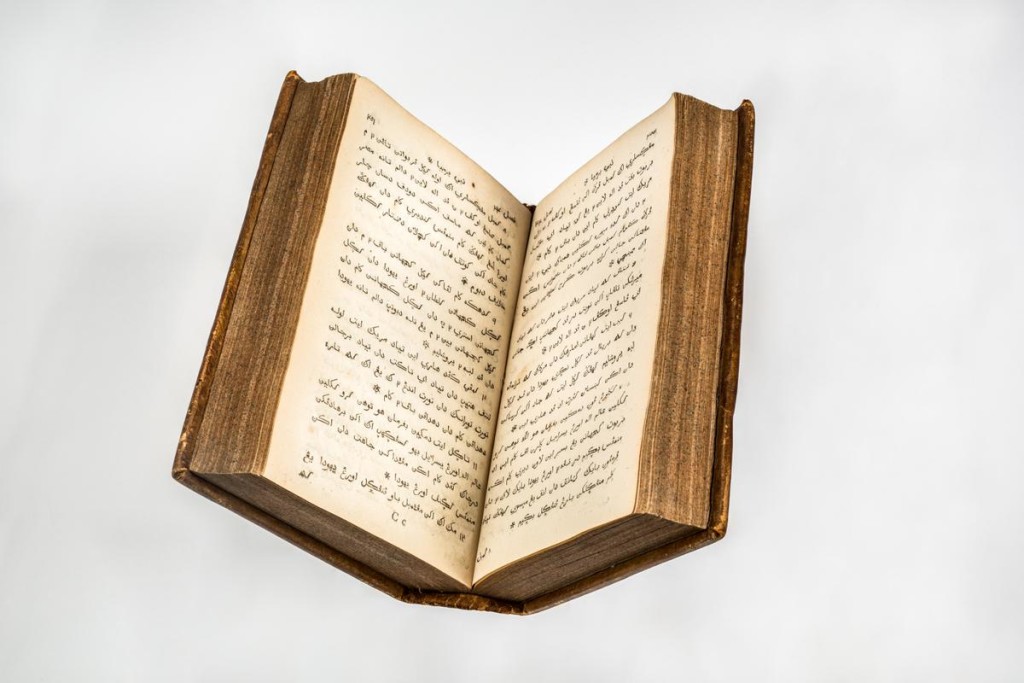
Treasures of the Rare Gallery – Al-Qawl al-atiq iaitu segala surat Perjanjian Lama ,Old Testament Bible in Malay (photo NLB)
Exhibits on Java, Sawarak , Sumatra written by the “colonial masters ” stationed here, a reminder that Singapore was part of the “Straits Settlements”
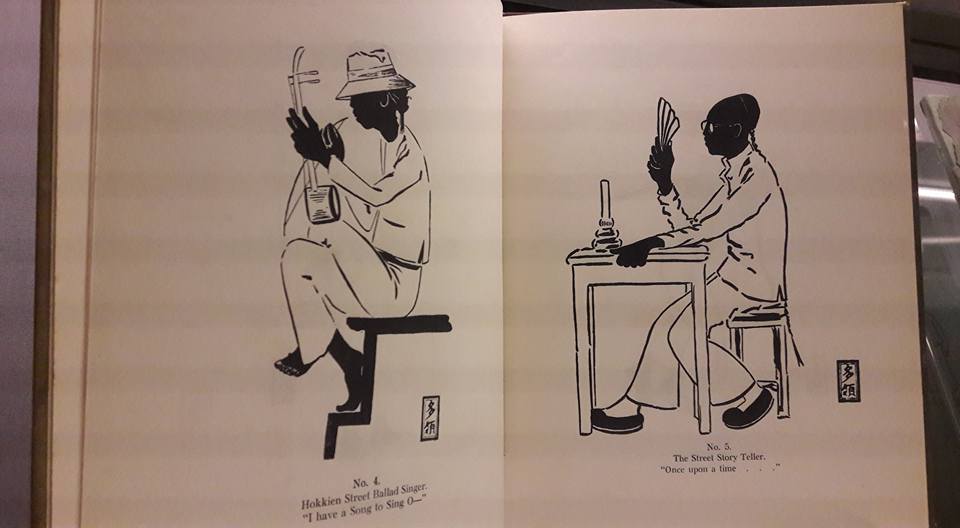
Thirty-two such silhouettes of different types of Malaysian people of the 20th C from “Shadows in The Malay Peninsular” by W.G. Stirling, London 1910 (photo Catherine Lim)
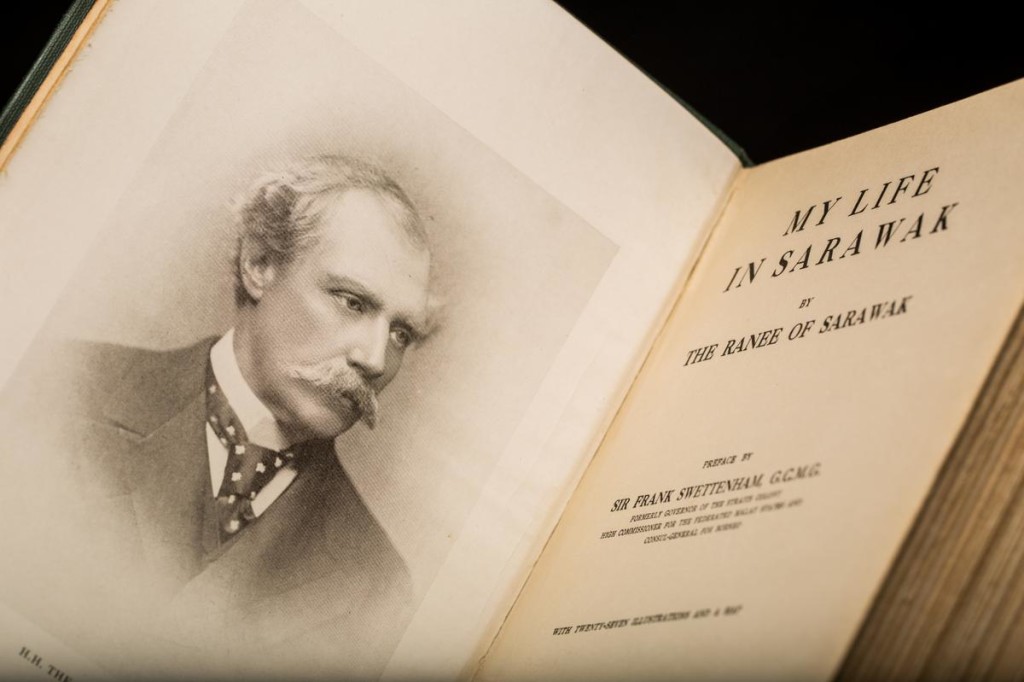
Written by Margaret Brooke “Ranee of Sarawak (1849-1936) and consort of the Sir Charles Brook. The copy on display establishes the social connection between the Brookes and Swettenham (Governor of the Straits Settlements). Swettenham refers fo Ranee as “Margaret darling” in 2 handwritten letters (photo NLB)
Expressing Raffles passion for the biodiversity of the region.
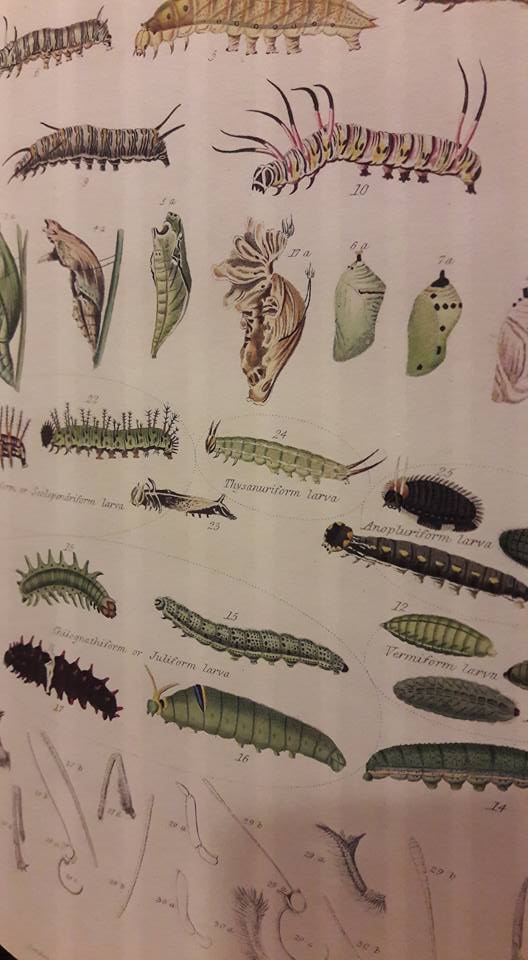
From “Descriptive catalogue of the Lepidopterous insectsnby Thomas Horsefield London, 1828/9 (photo Catherine Lim)
And lets not forget, exhibits which clearly reminds us of the collector’s primary interest, Raffles himself.
Of interest for further study an exhibit of : a bill introduced to the British Parliament on 18 June 1824 to ratify the Anglo-Ducth Treaty of 1824 which concluded longstanding territorial and commercial disputes between Britain and Netherlands. A valuable source of information of how the two rival colonial and maritime powers decided on how to carve out their colonies in the region
As a collection, its importance is to give visitors a flavour of our past, providing historical context in print that covers different facets of political, social and community engagement at a personal level.
If there is anything more the NLB can do to get more Singaporeans to “embrace” the rare collections , is perhaps for this collection to serve as an inspiration for other activities which could revolve round art and story imagining of a past which helped defined who we are today.
Guided tours of this collection will be held monthly between July and December. Do check listings here
———————————————————————————
Catherine Lim is co-editor bukitbrown.com
A sunny Sunday morning saw an opportunity to explore a charming, idyllic stream, embraced in nature’s natural air conditioning right smack in the forested area known as Lentor (Tagore) Forest of Teachers Estate. Our guide was Leong Kwok Peng of Nature Society of Singapore (NSS).
Here are some photos of that morning, where some “frolicked” and others explored or at times did both. We all came out came out refreshed and also sad that we are in imminent danger of this intimate stream being “canalised” in concrete or buried over in development plans.
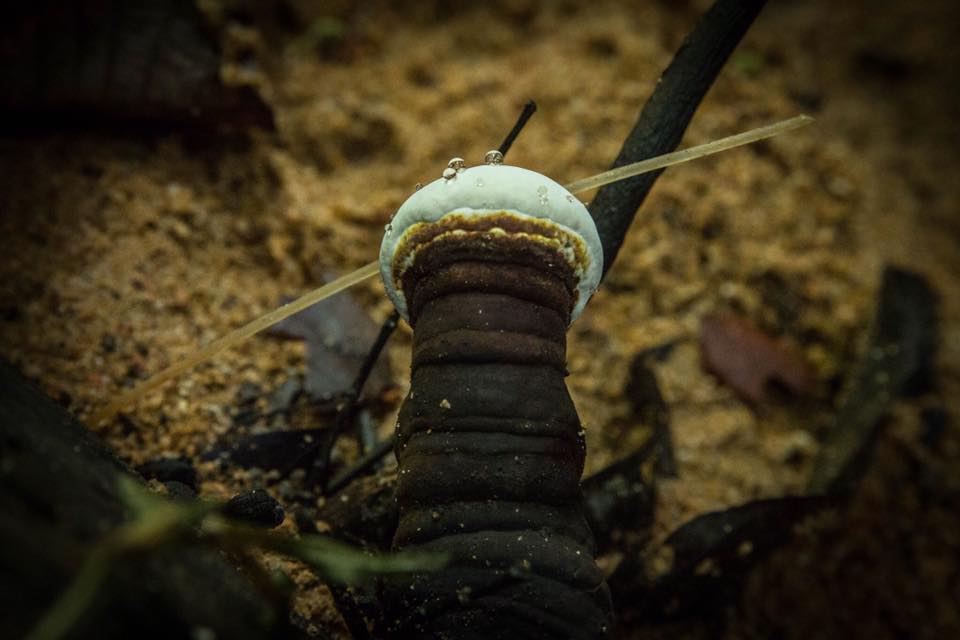
Well, hello there are you pleased to see me? Photo captured by Lawrence Chong from a most unusual angle.
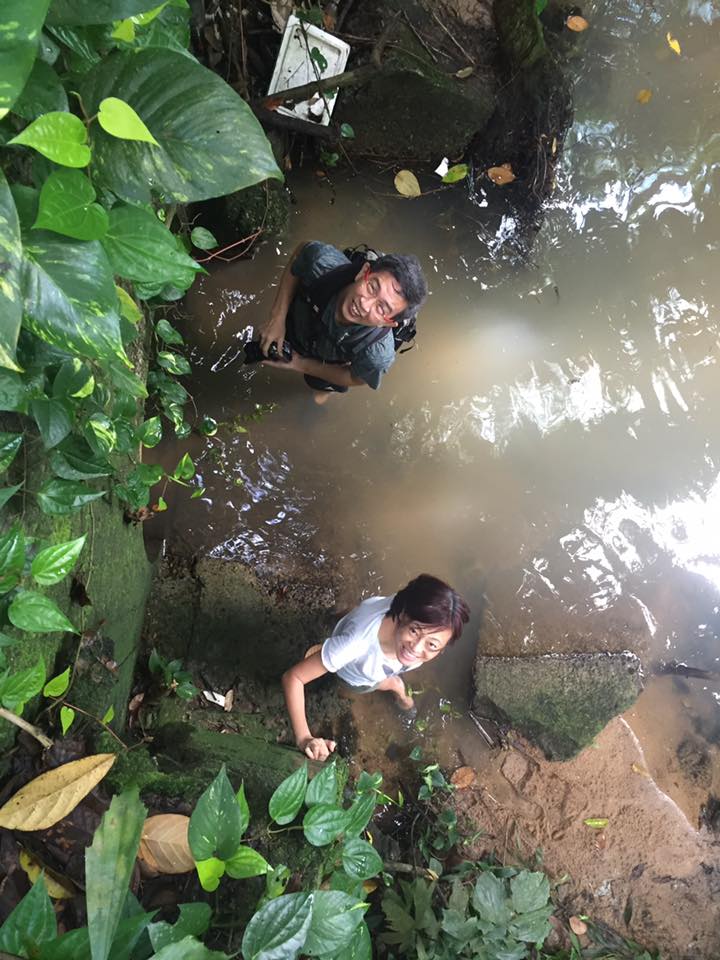
And hello there again from 2 brownies, no they did not fall down from what looks deceptively like a long distance. It’s a stream so getting wet is par for the course (photo Simone Lee)
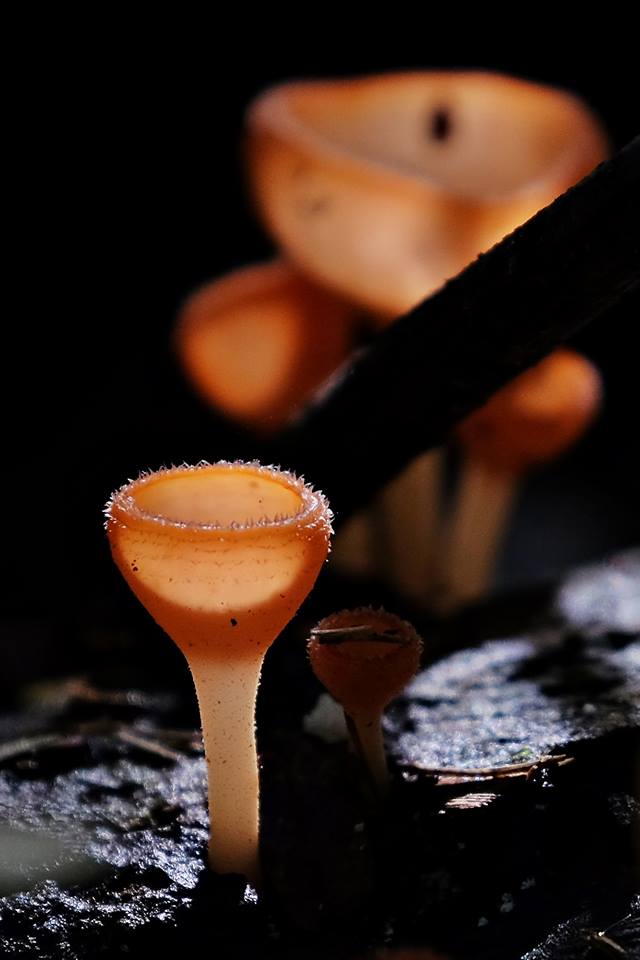
“I wandered lonely as a cloud That floats on high o’er vales and hills, When all at once I saw a crowd, A host, of golden toilet pumps” – with apologies to Wordsworth , Simone thought of toilet pumps when she saw them. Photo by Ang Hock Chuan
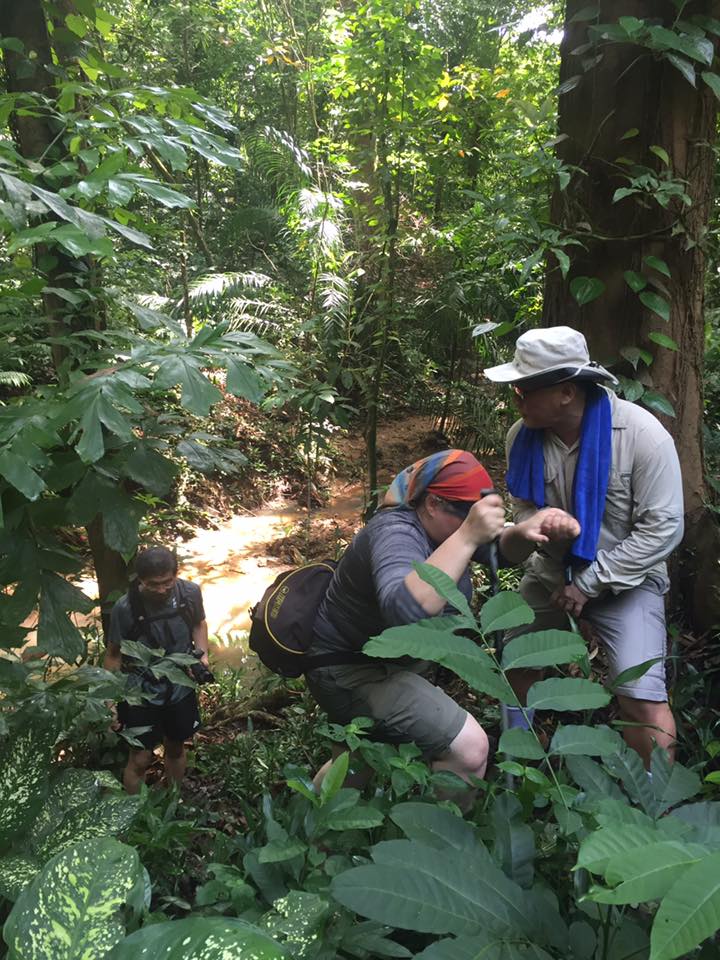
Not that difficult to get up and down with a gallant hand to this neck of the woods, just some light bush bashing through forested trek and voila you are there. (photo Simone Lee)
Join the Nature Society of Singapore (NSS) FB group here and you can find more photos on the stream and its environs.
The NSS wrote a position paper proposing a phased development of the area leaving the streams untouched. Their rationale was quite simple, since not all the land was needed urgently :
“We leave a valuable stretch of forest as a land-bank with its ecological and biodiversity values for future generations to decide as to whether they want to preserve it or to exploit it for other uses. Tastes and needs can vary and differ from generation to generation. What is of no value today may be in great demand for a future generation. People, whether in the immediate or far future, may appreciate natural greenery and its wildlife more as these become rare or scarce —- apart from what is already there in our limited protected nature areas.”
To that we say, hear, hear and Amen. Please help to spread the word to your MPs!
You can read more about the position paper which can be downloaded here
Tripadvisor Travellers’ Choice® 2013 Winner “Ranked #16 of 665 attractions in Singapore. “
6 November, 2013.
Latest Reviews
“Get there before its too late…This is a very special place – peaceful, beautiful, historic, and a natural wildlife haven”
Visit Bukit Brown cemetery while you still can – before the bulldozers move in to create yet another expressway. This is a very special place – peaceful, beautiful, historic, and a natural wildlife haven. Intricately carved statues guard many of the old gravestones, which are often adorned with gorgeous antique tiles painted with flowers and peacocks. There are several pathways to explore and so the cemetery also makes a lovely place just to visit for a ‘country’ walk. Kingfishers, monitor lizards, monkeys and nightjars are common sights, and some of the huge banyan trees are staggering. In recent months the ‘Friends of Bukit Brown’ have painstakingly signed and cleared pathways to the gravestones of many notable names from Singapore’s history, making this an even more interesting place to visit.
Visited October 2013
HilarySingapore
Singapore is a concrete jungle and if there is a garden, it is man-made, like Gardens by the Bay…..(except for) a historical site called Bukit Brown.
Today, I had the privilege of touring a historical site called Bukit Brown. Bukit Brown is a cemetery, where many of Singapore’s pioneer are buried and may soon be “awakened” from their peaceful slumber to make way for 8 lanes highway.
I toured with volunteers of Bukit Brown, and learn about the tombs of Tan Kheam Hock and his family. History is being collected as I write this review. The tour is made even more interesting with the descendants of Tan Kheam Hock in our midst. A definitely worthy visit for any tourist to Singapore, to see a side of Singapore which money cannot buy.
As Bukit Brown tour is manned by volunteers with a passion to preserve the heritage and culture of this little city state, one will need to visit Bukit Brown FB page to make enquiries of any tours.
Visited October 2013
IreneLim63
It was like stepping back into another place and time. You can see rays of sunshine illuminating the misty verdant hills, rich smell of the forest and hear sounds of delightful birds. It was somewhat surreal in heavily urbanised city but the oasis of tranquility calms the soul and the mind is clarified. What a wonderful place to go for a walk!
I joined a friend to witness the Cheng Beng festivity and was overwhelmed by the throngs of people with their prayer paraphernalia and the heavy traffic winds patiently through the hills. It was BUSY!
Then some 3 months later, I took a trip with the Brownies who gave free guided walks through Bukit Brown practically every weekends! It was like stepping back into another place and time. You can see rays of sunshine illuminating the misty verdant hills, rich smell of the forest and hear sounds of delightful birds. It was somewhat surreal in heavily urbanised city but the oasis of tranquility calms the soul and the mind is clarified. What a wonderful place to go for a walk!
Yes, we have the crowded Botanic Gardens, the monotonous MacRitchie & Pierce reservoirs, the hot Sungei Buloh Reserve and Chek Jawa Park is a little too far to reach but Bt Brown is way too cool! If you dare venture off the main track, you will encounter unusual structure, designs, engravings, statutes, reflecting the various cultures, beliefs & eras. You might encounter a monitor lizard, horse riders and almost always expats walking their dogs. Join the Sats & Suns groups of 10-20 people on the guided walks like the one I’ve taken, listening to the passionate guides who are bursting to share with you the stories of the hills.
Visited September 2013
Ally A
“The most beautiful place on earth”
Jo Prudence, descendant of George Henry Brown, after whom the cemetery is named.
A spectacular time-lapse aerial video of Bukit Brown
http://www.youtube.com/watch?v=RaxSMpabOL8&feature=youtu.be&ref=nf
More beauty shots of Bukit Brown here
31 October 2013
Bukit Brown is home to some 90 species of resident and migrant birds. These photos by Goh Yew Lin, capture some of the birds feeding in the early morning. The “wild fruits” are the ripe figs of Ficus benjamina (Waringin, Weeping Fig). This strangling Ficus species is one of keystone tree species in Bukit Brown. Whenever these trees are figging, the birds go gaga over the fruit feast.
The Pigeons
The Kingfisher
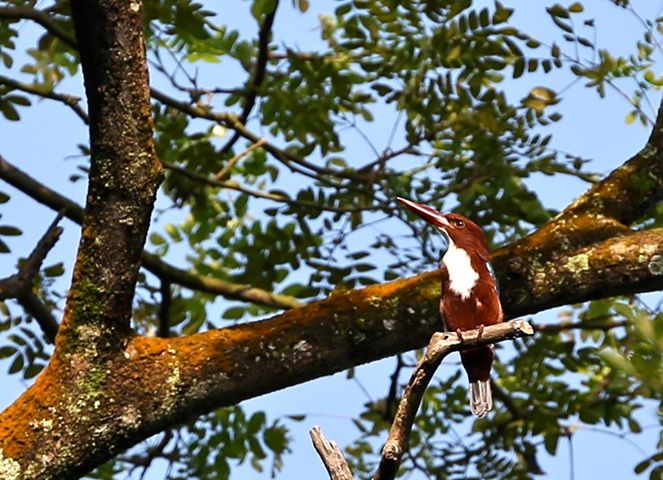
“This kingfisher was not perturbed by my presence, striking poses for a good five minutes” Goh Yew Lin
The Oriole
The Starling
Morning Vistas
“It started off as a dream. A dream to create a video where one or more musicians play beautiful music as they explore the ‘invisible’ gem of Bukit Brown “
Environmentalist Cuifen wanted to make Bukit Brown more “visible” to share its beauty and tranquility.
The result ” Ukelady meets Ukebaba in Bukit Brown Conversations”
Please share, and share and share this video and let it go viral, so others can enjoy Bukit Brown too!
More on Cuifen’s thoughts on Bukit Brown in her blog Conscious Steps
Cuifen would like to thank :
Ukelady – Yen Lin
Ukebaba – Su Min
Video editor – Jasmine
Video & mic equipment – Ee Hoon
More information on butterflies spotted in Singapore can be found by joining this group Butterflies of Singapore and Malaysia
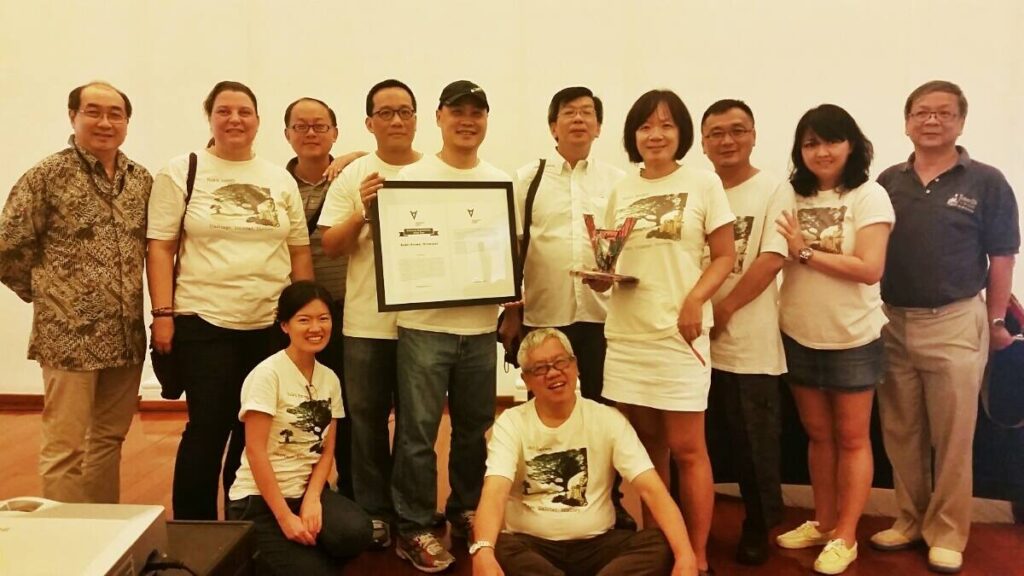
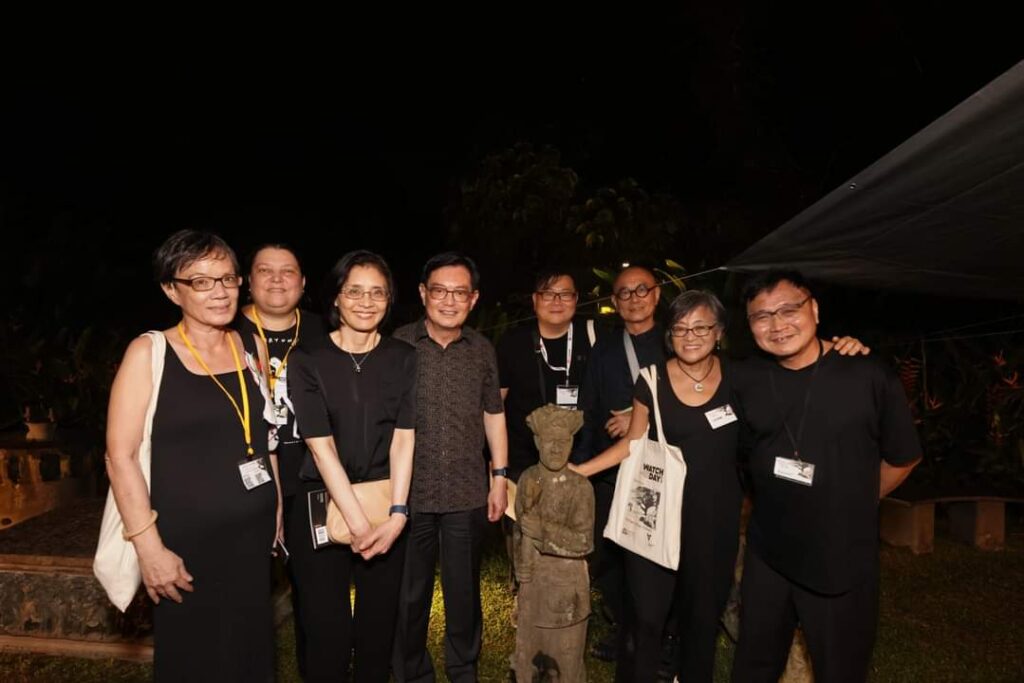
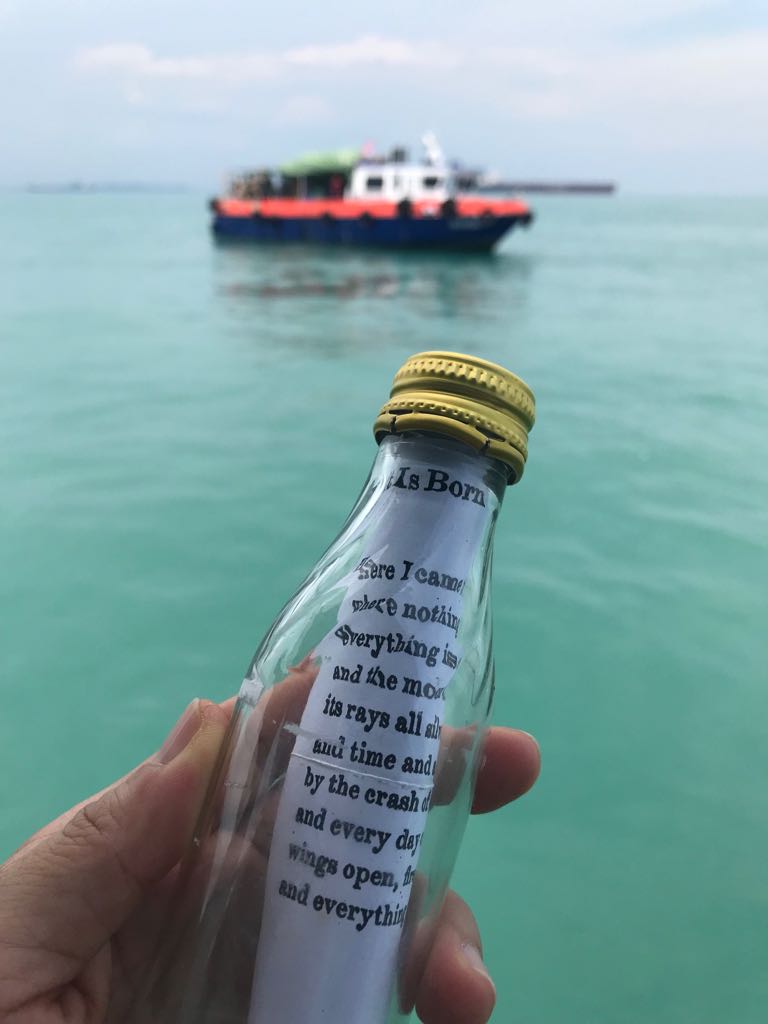

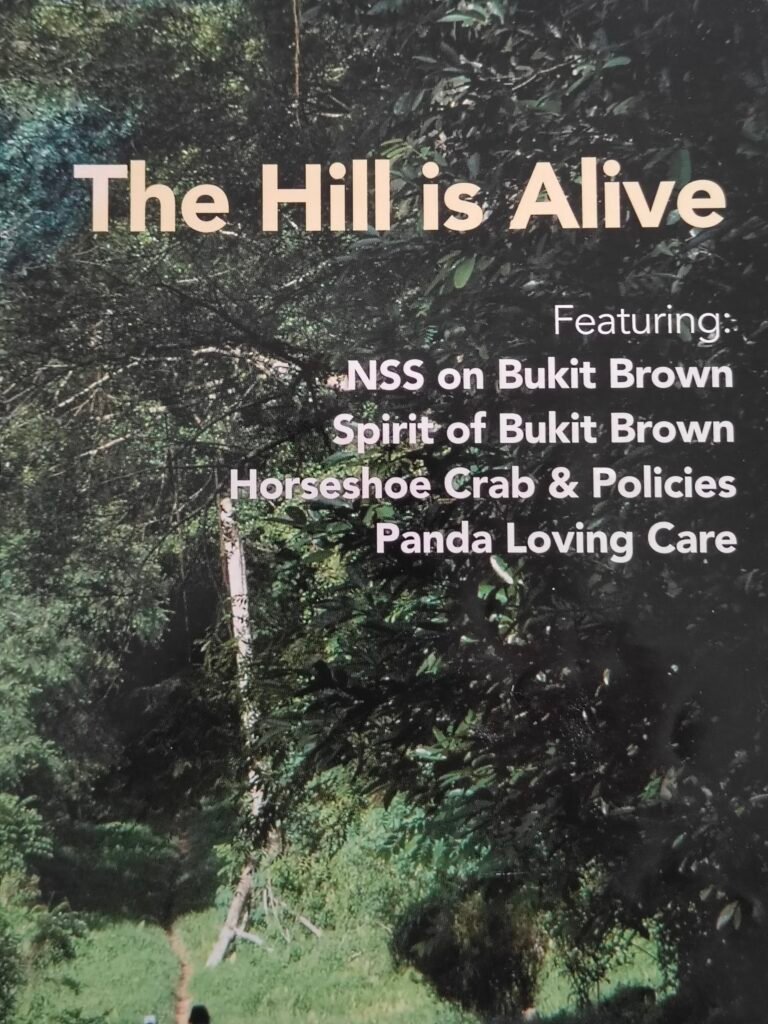
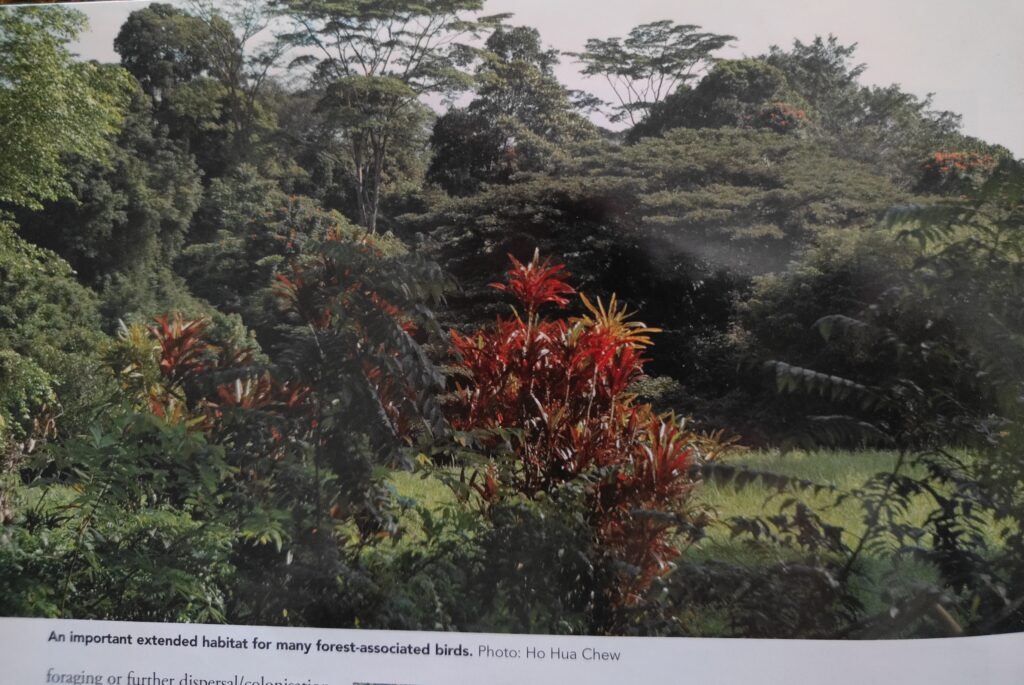
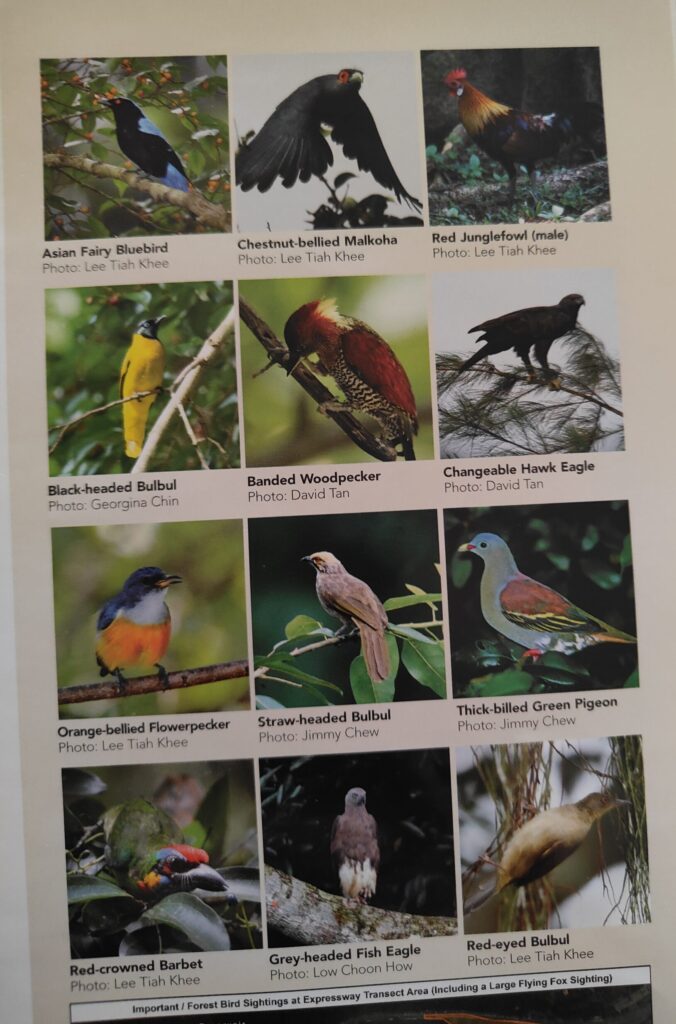
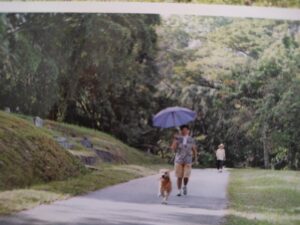
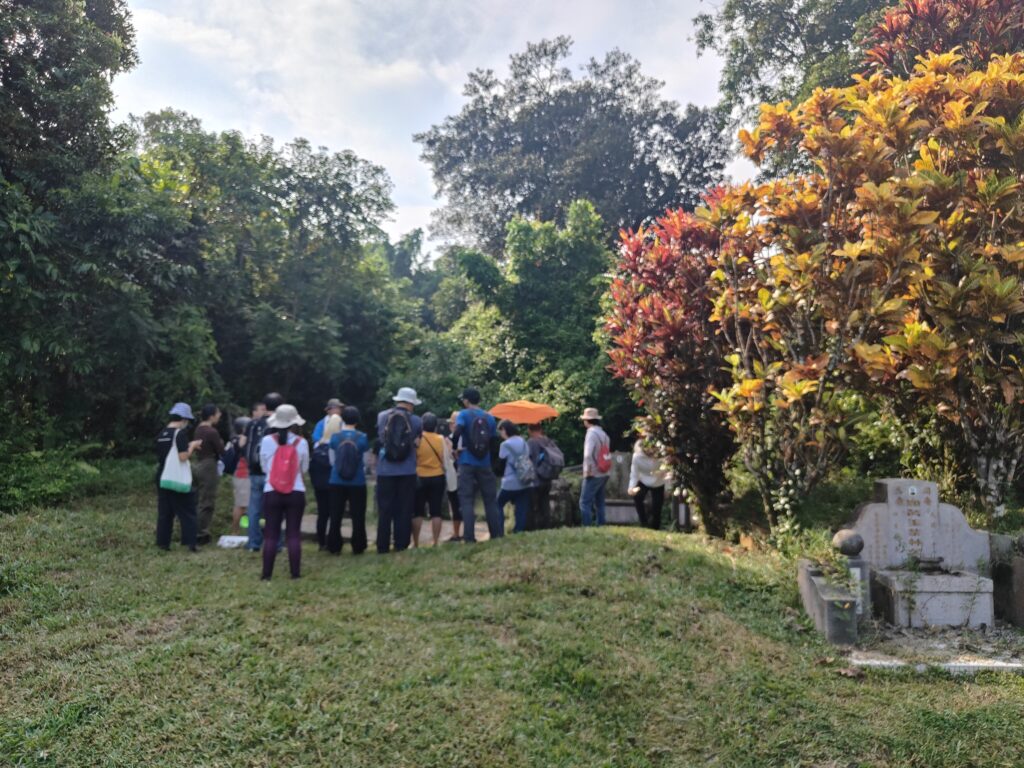
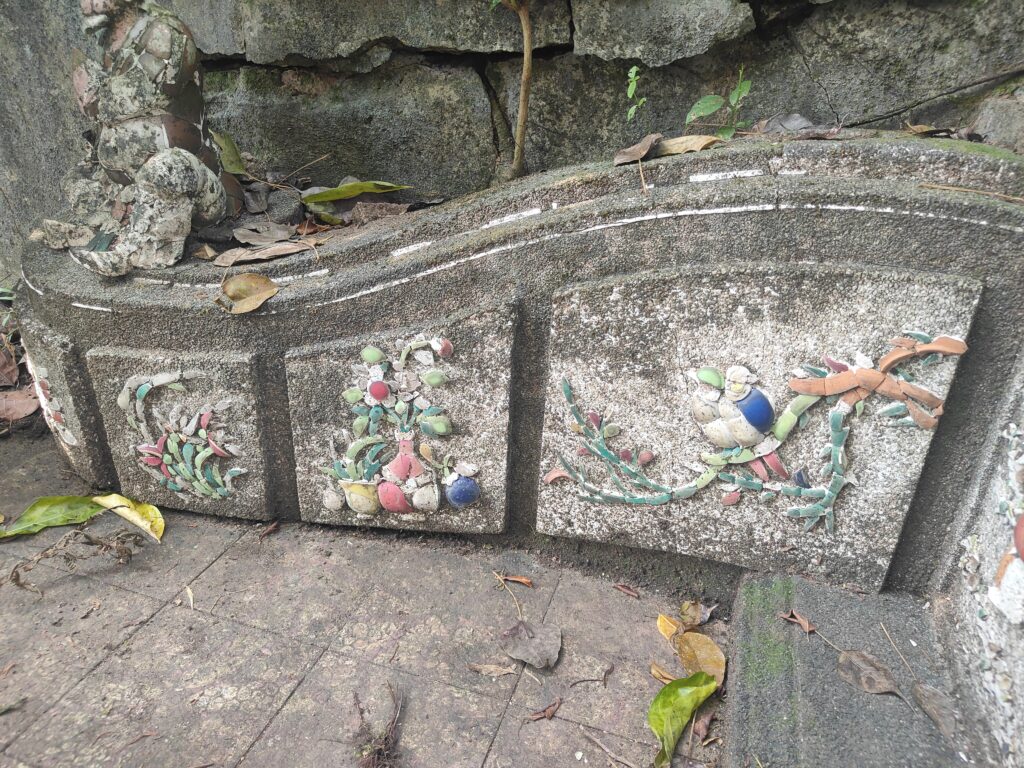
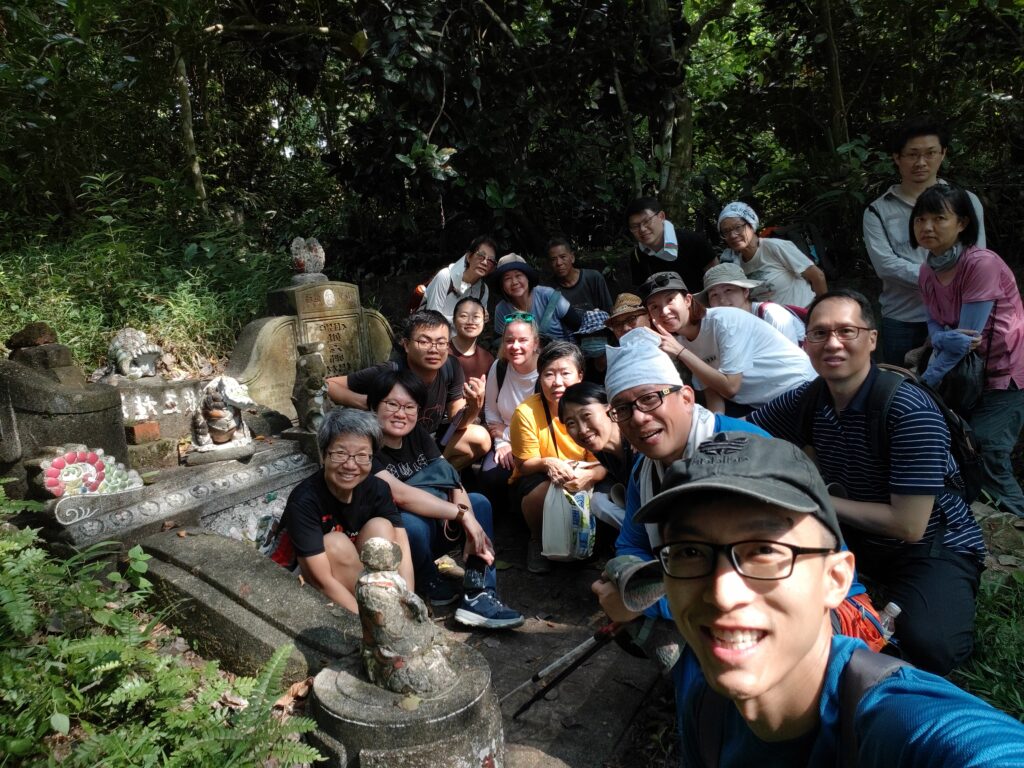
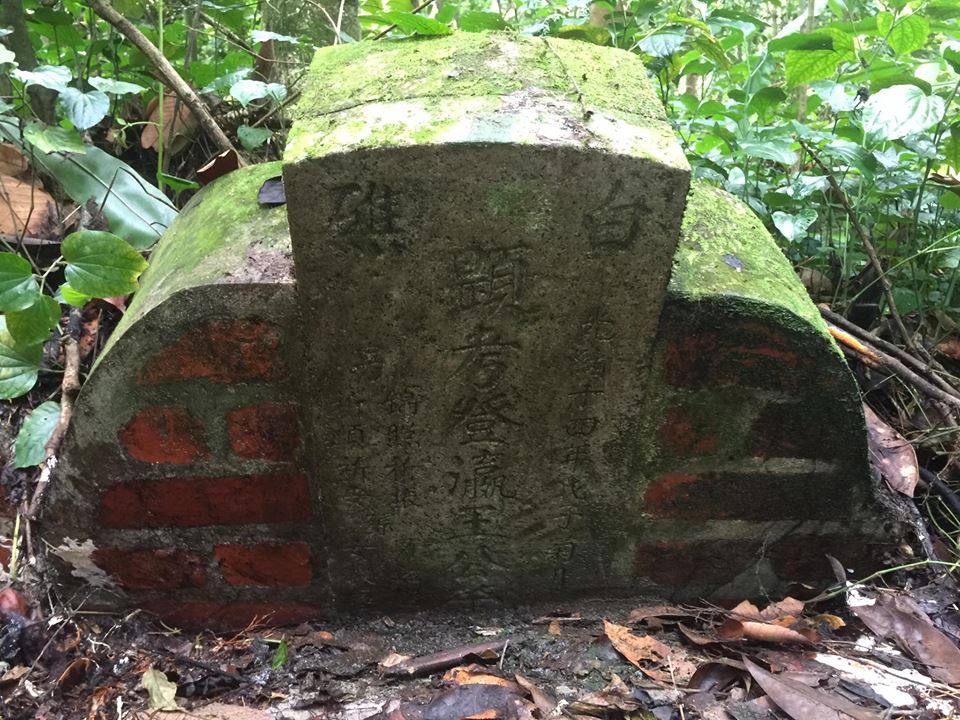
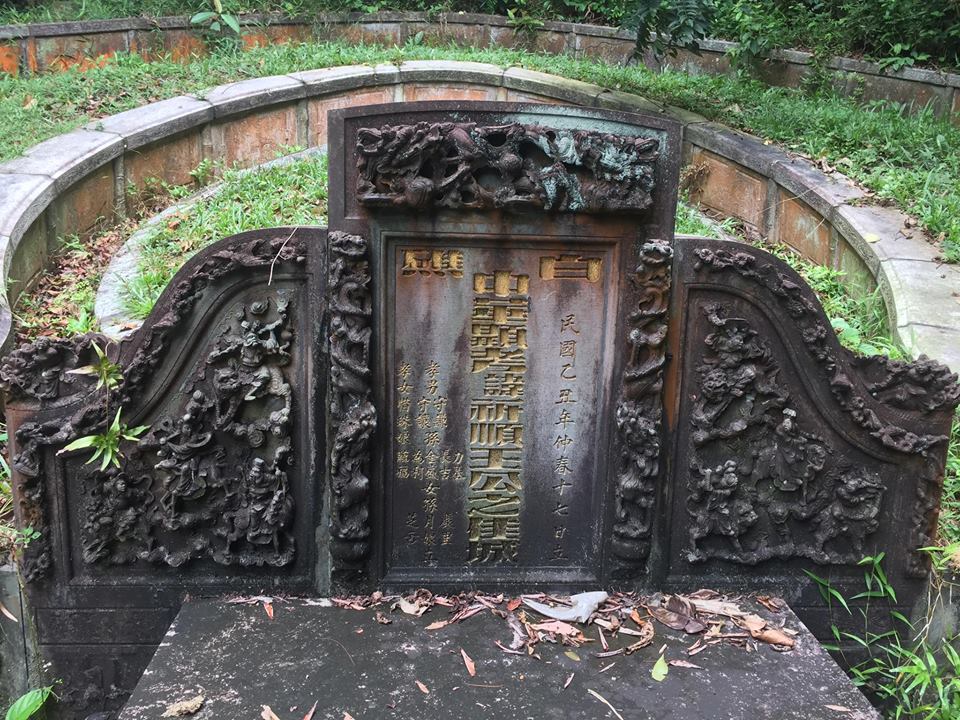
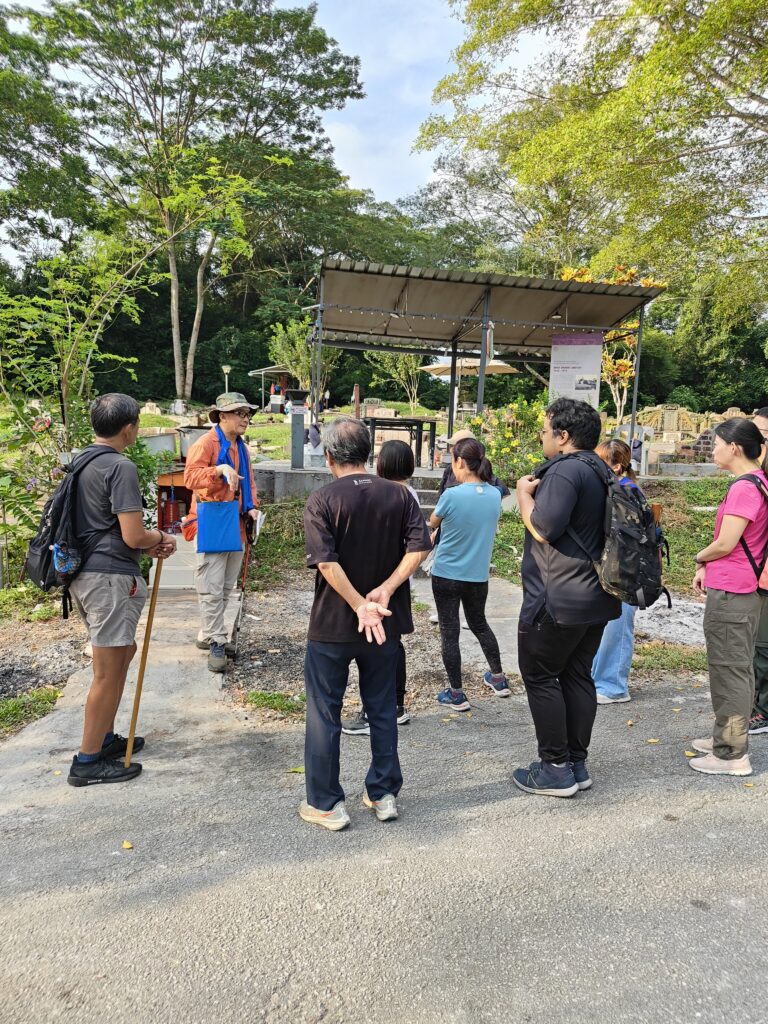
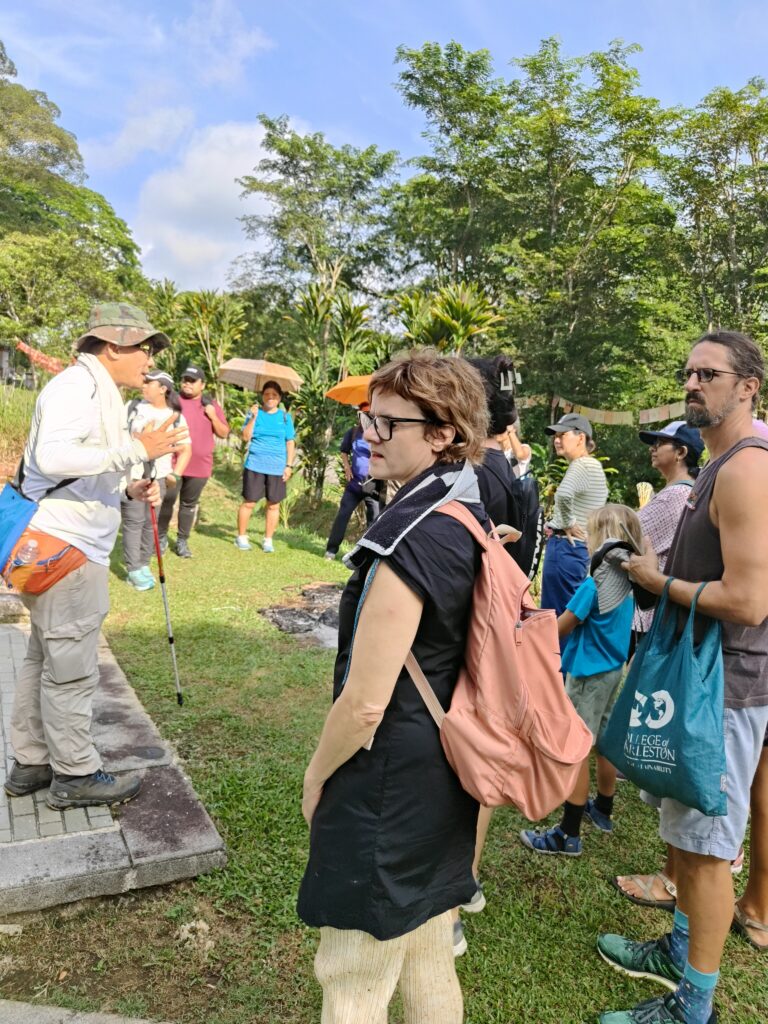
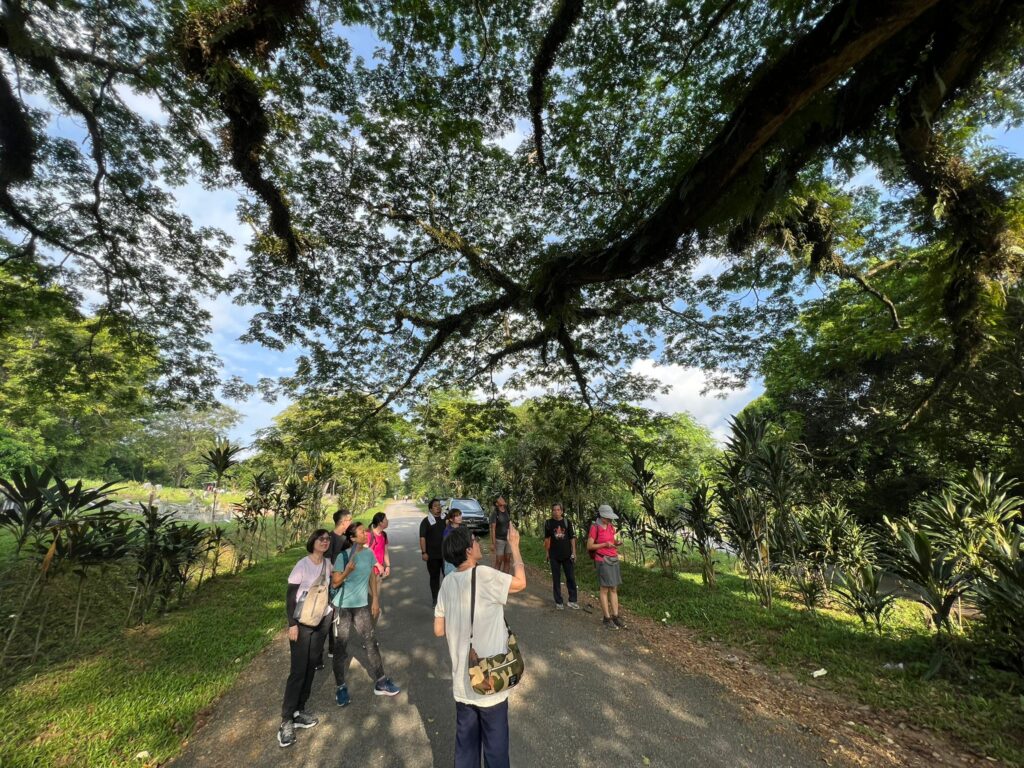
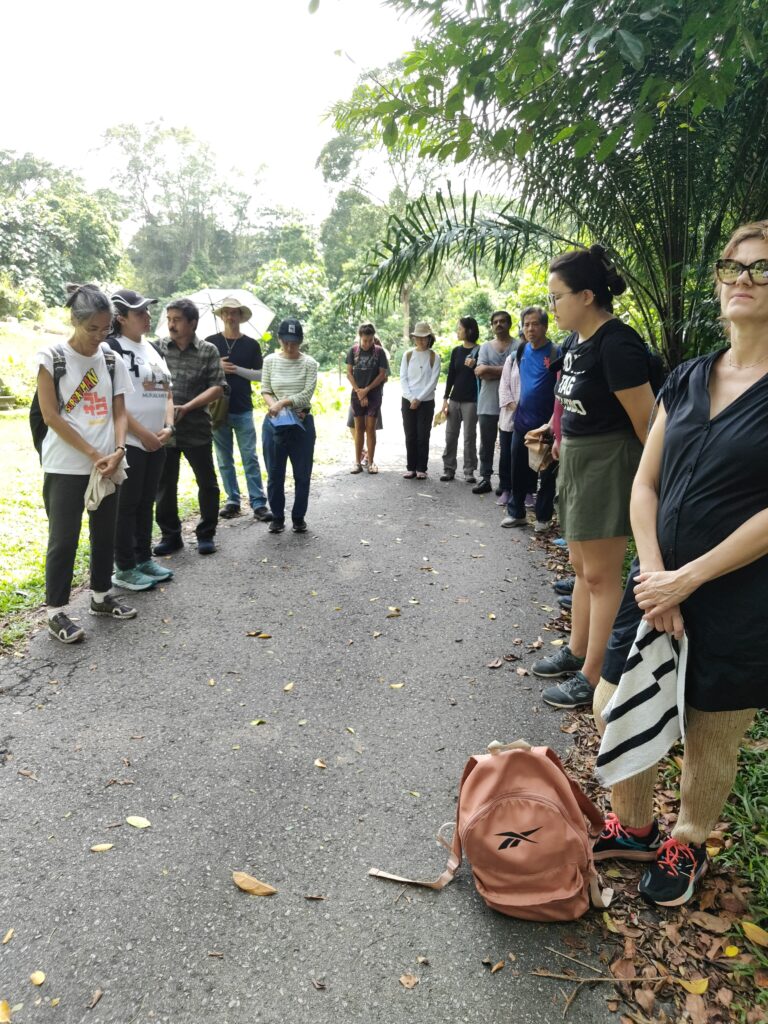
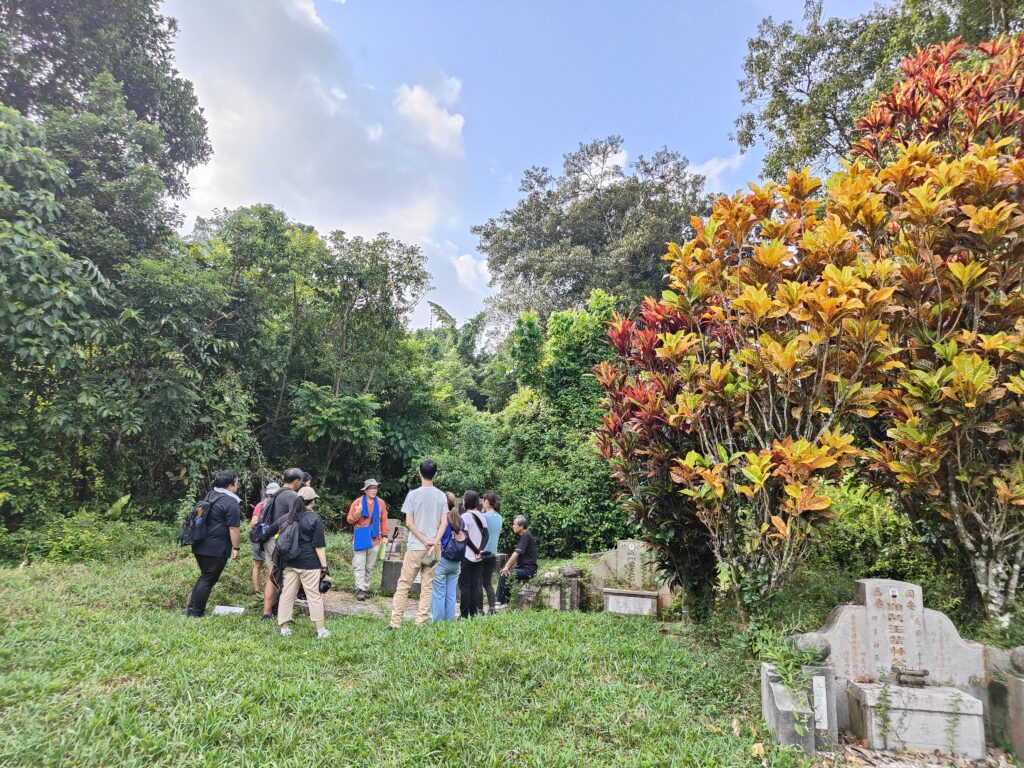
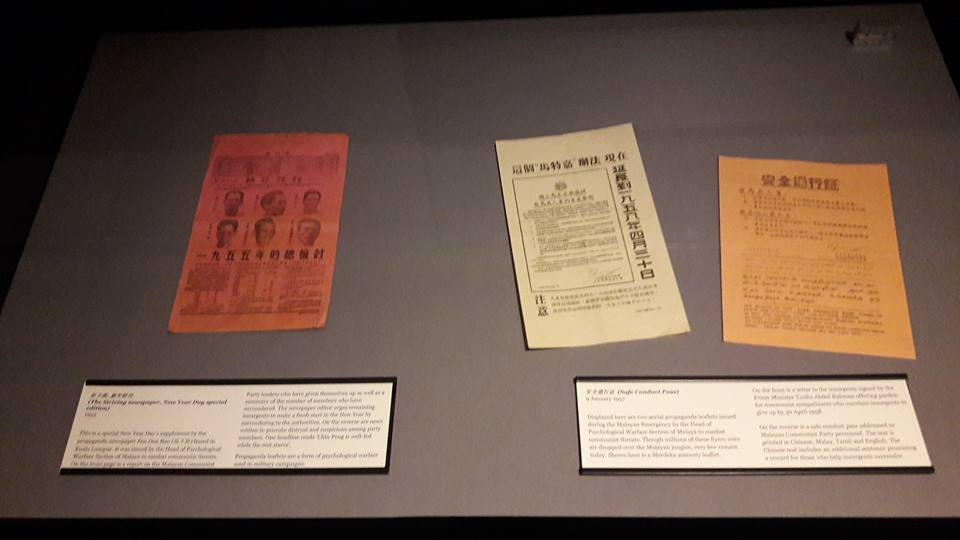
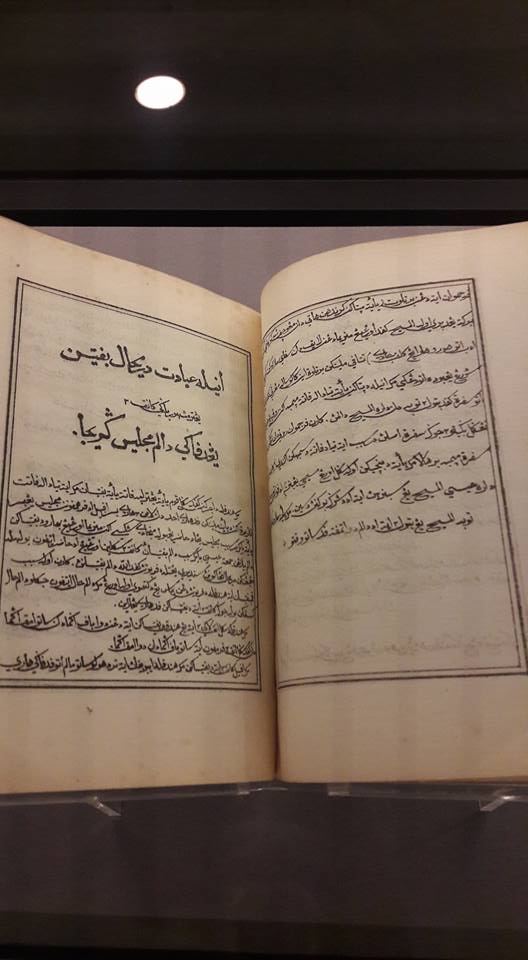

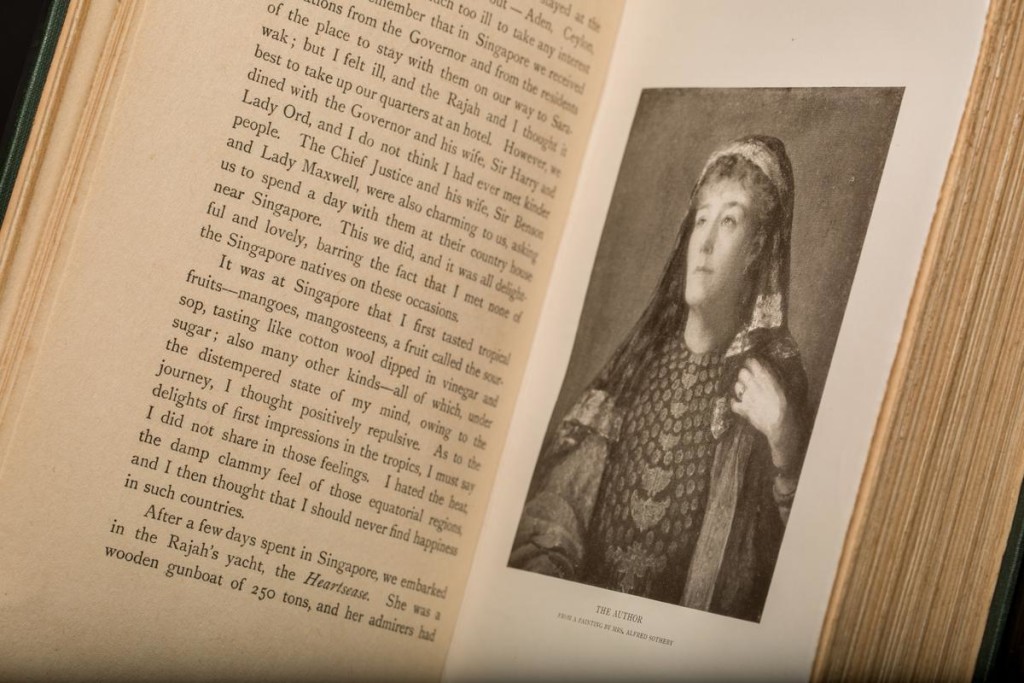

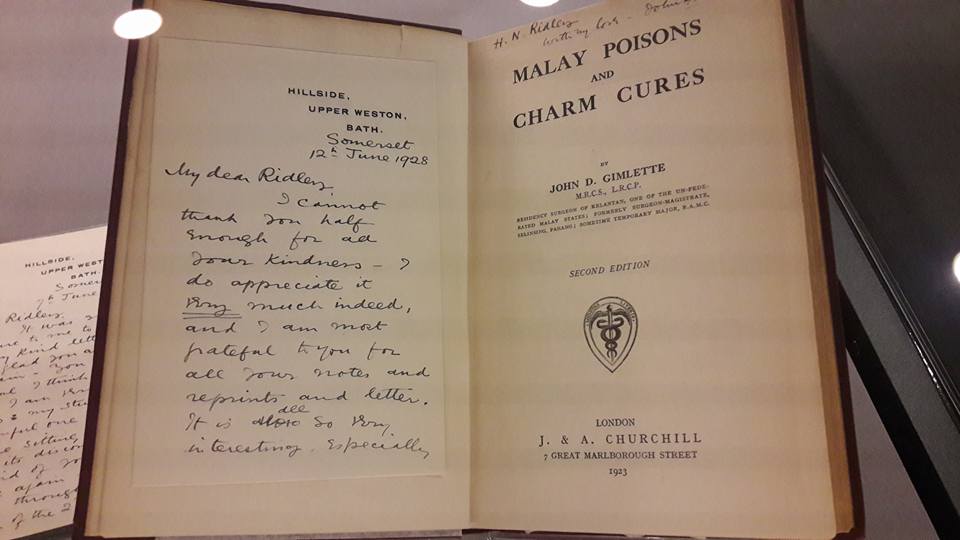
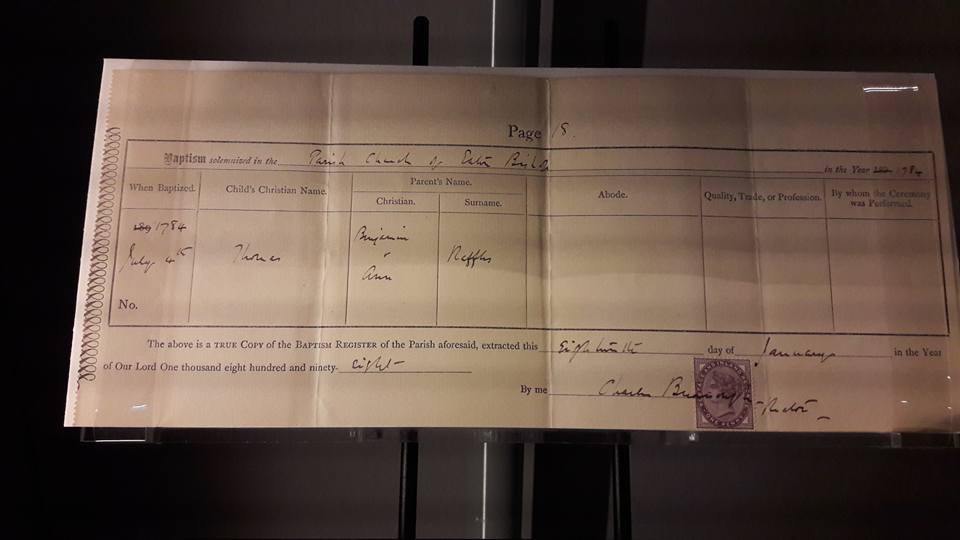
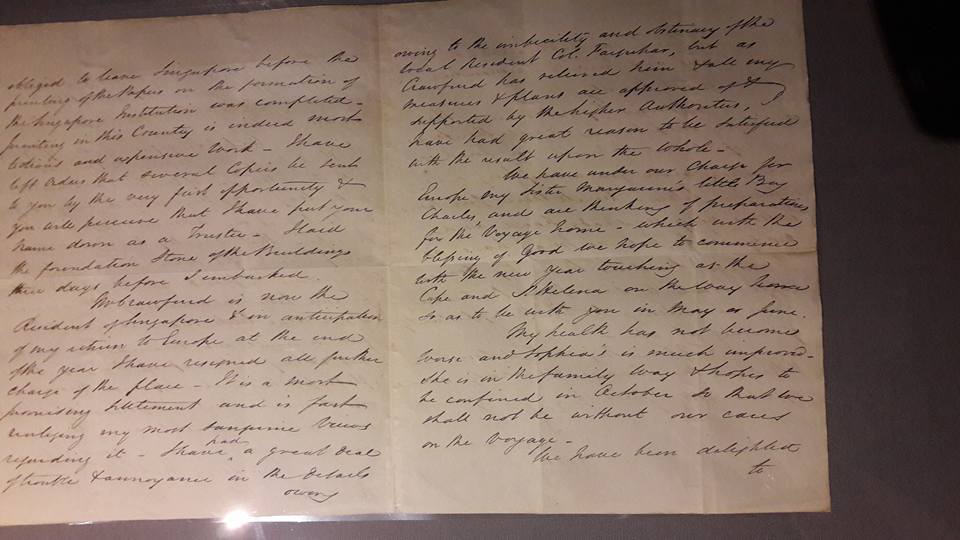
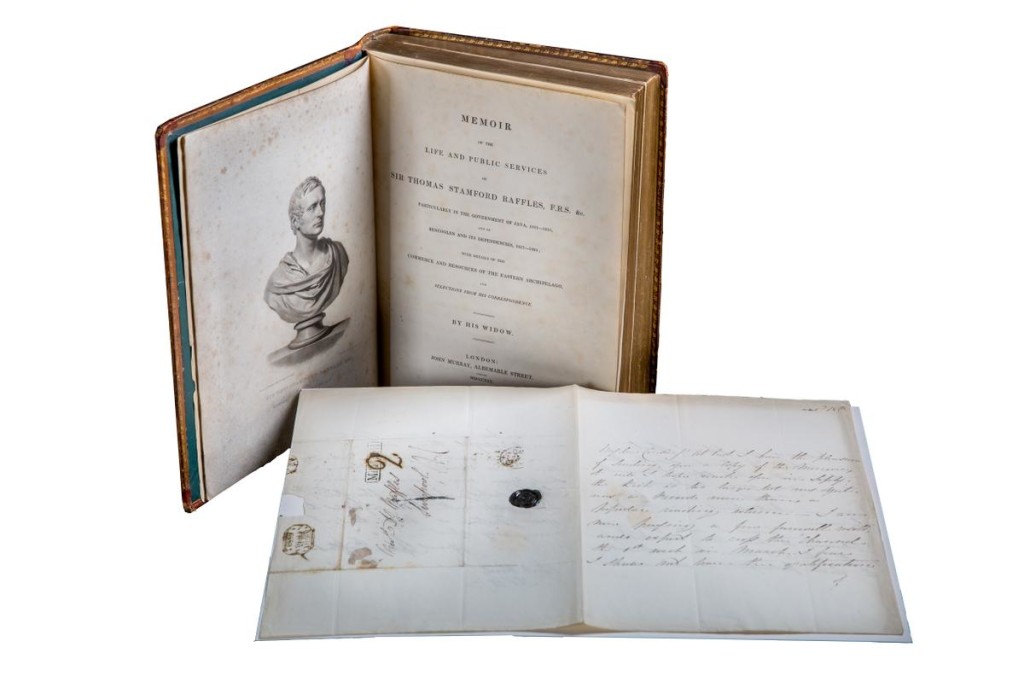
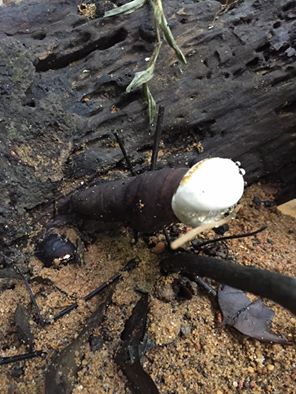
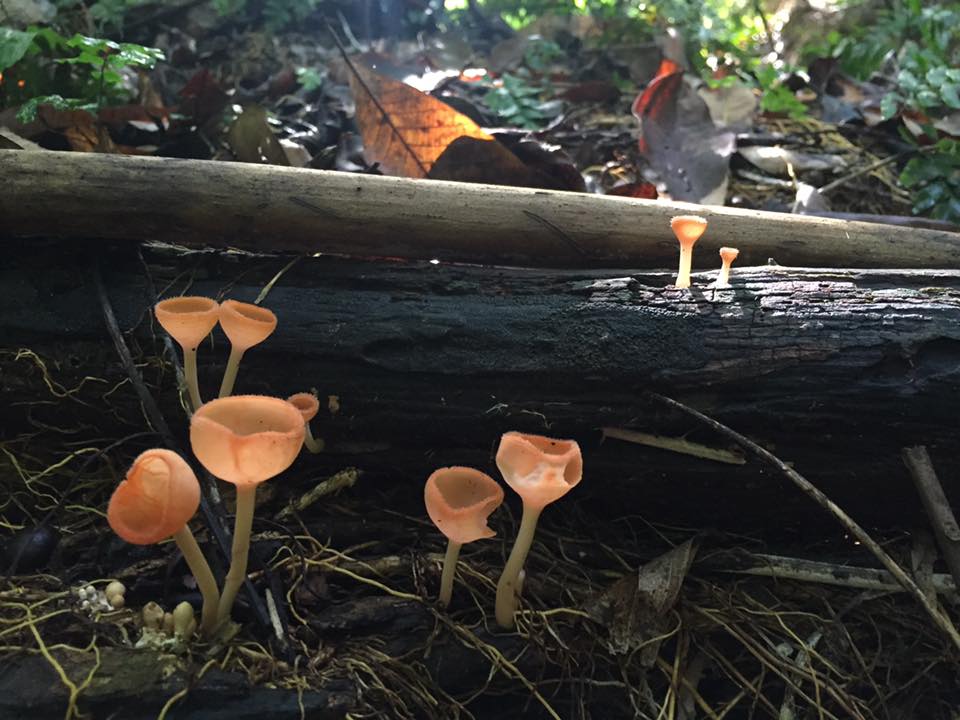
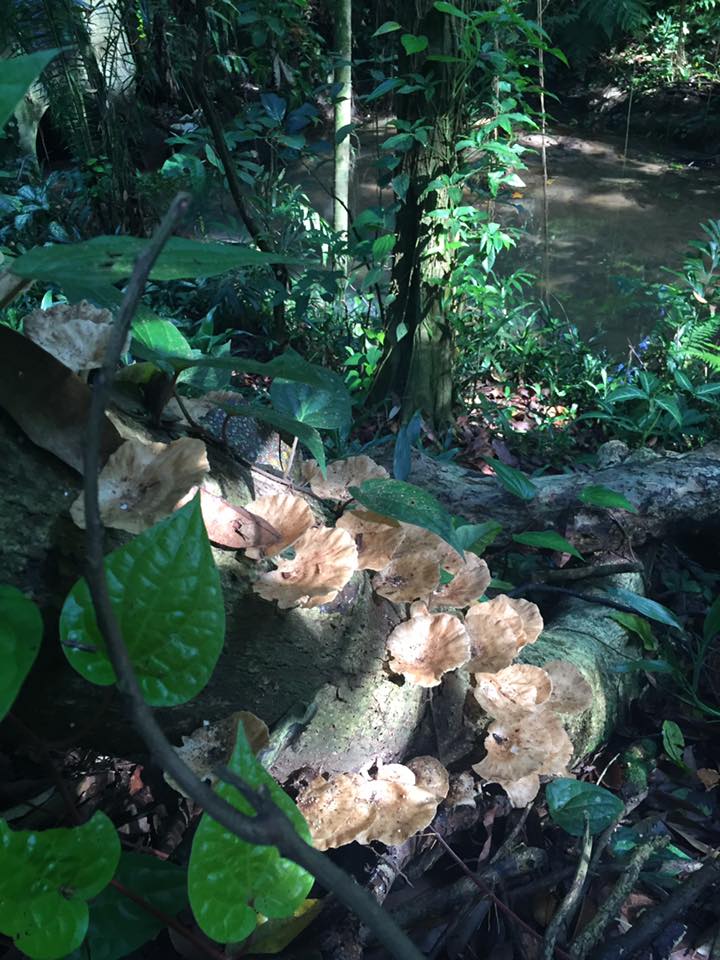
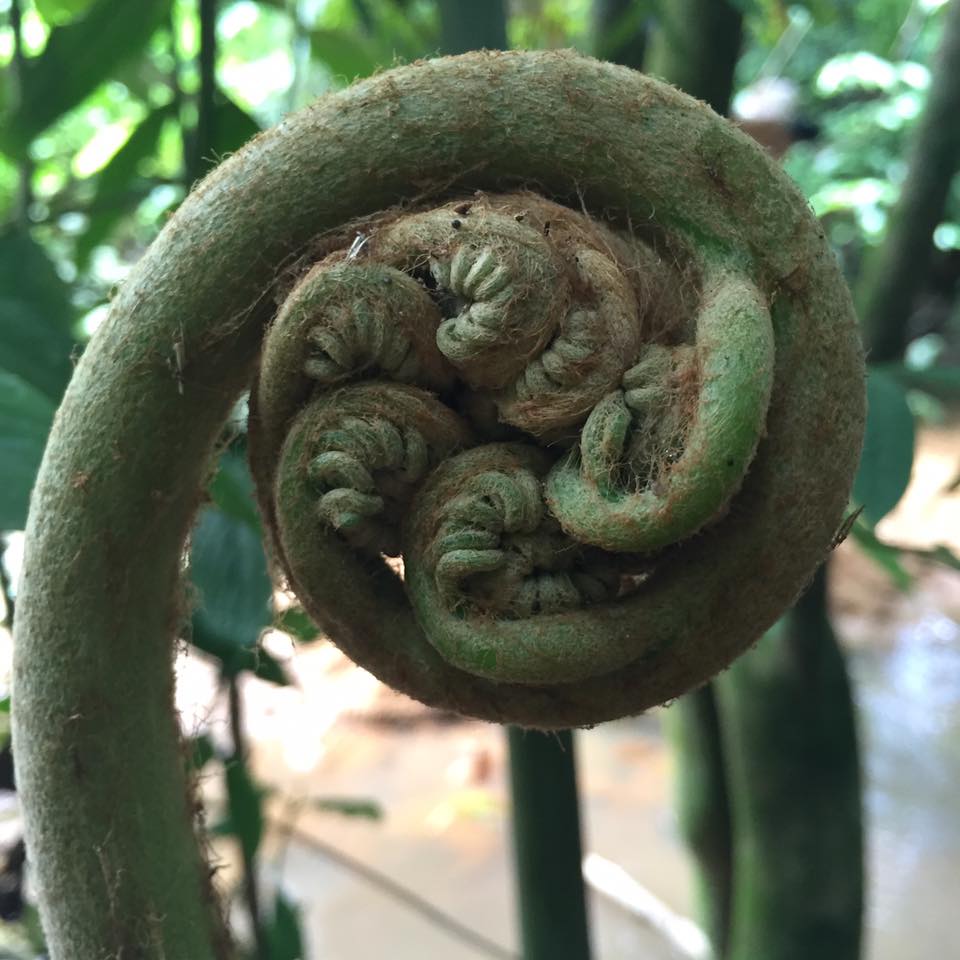


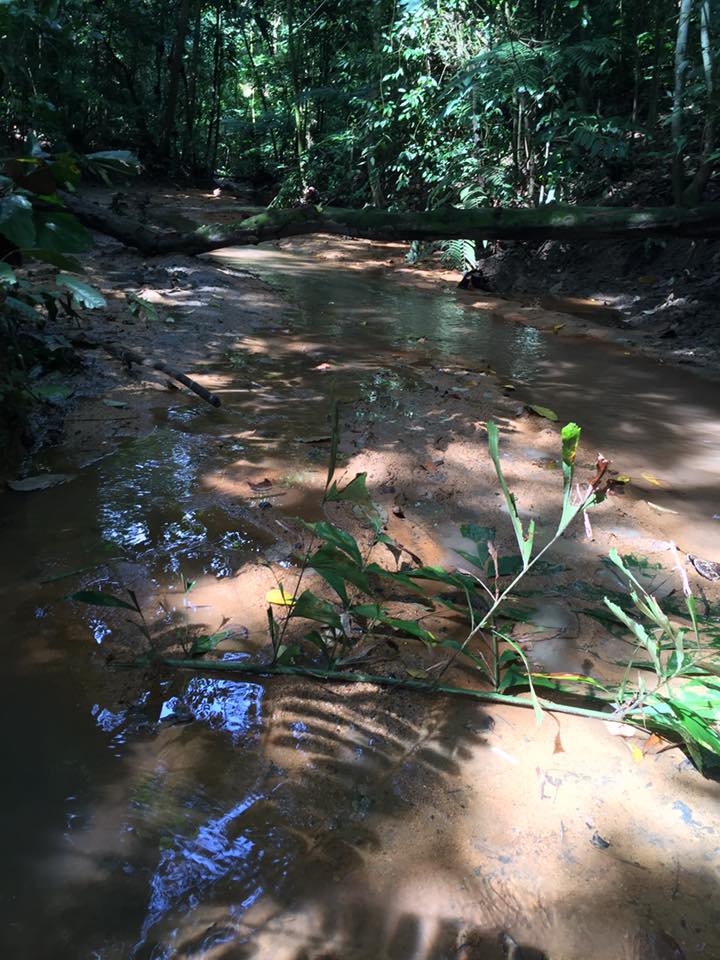
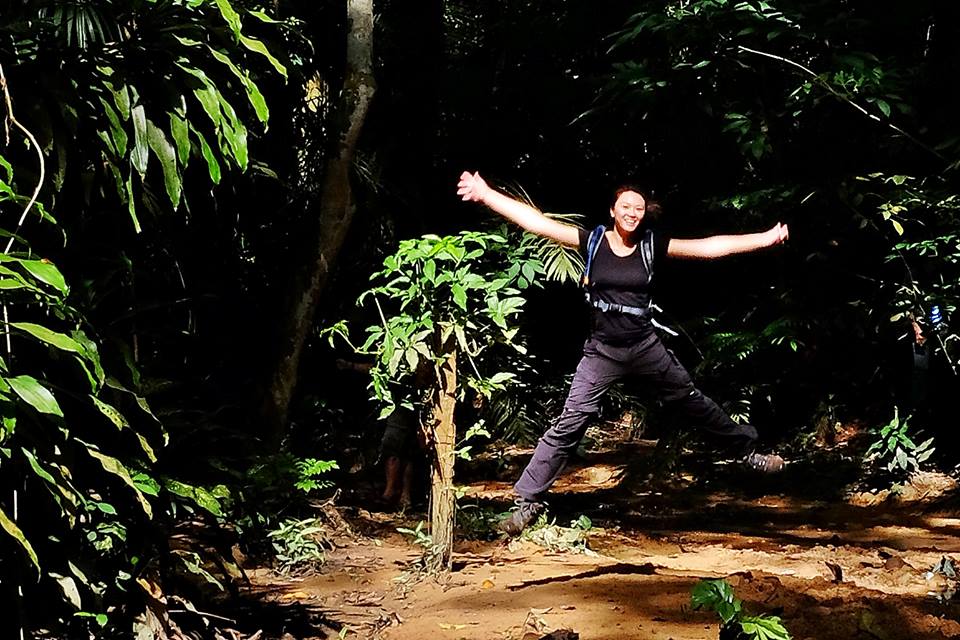
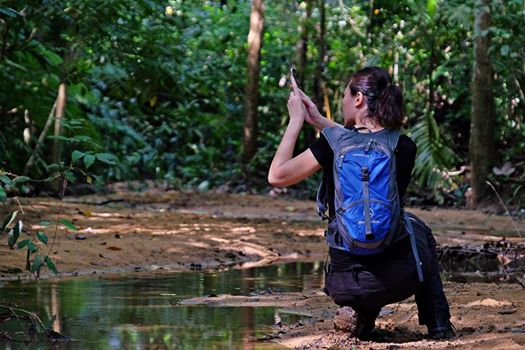
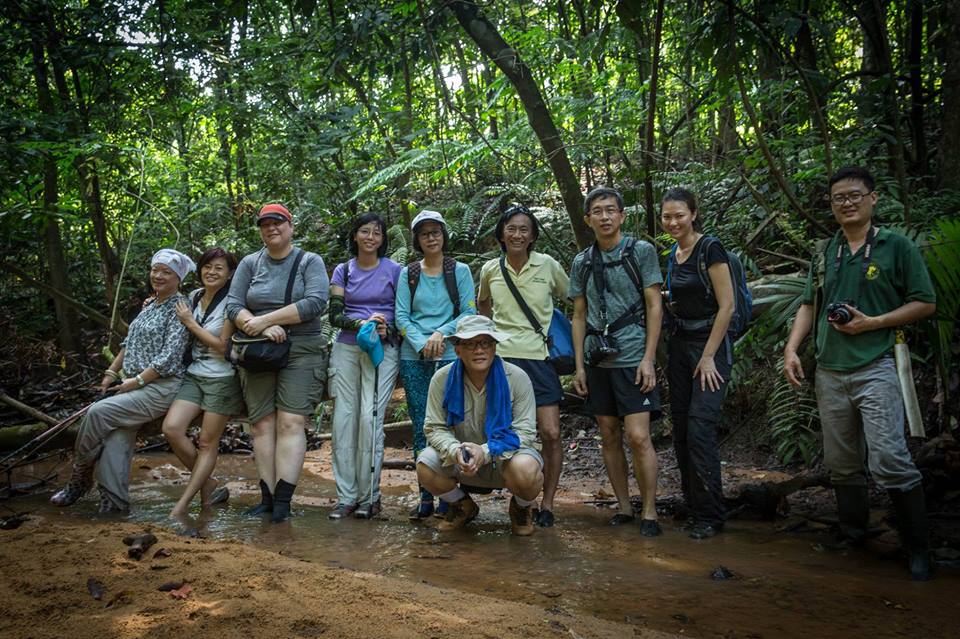
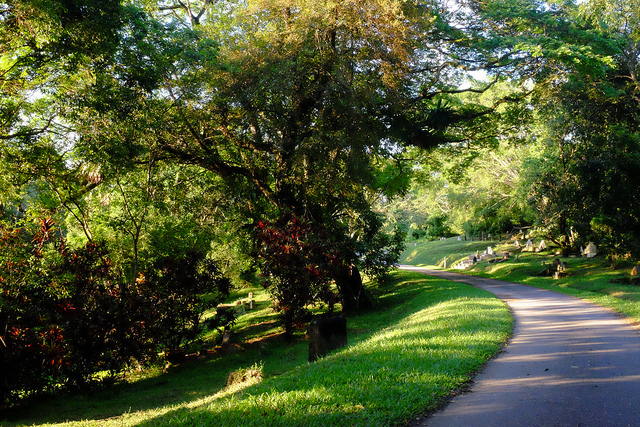

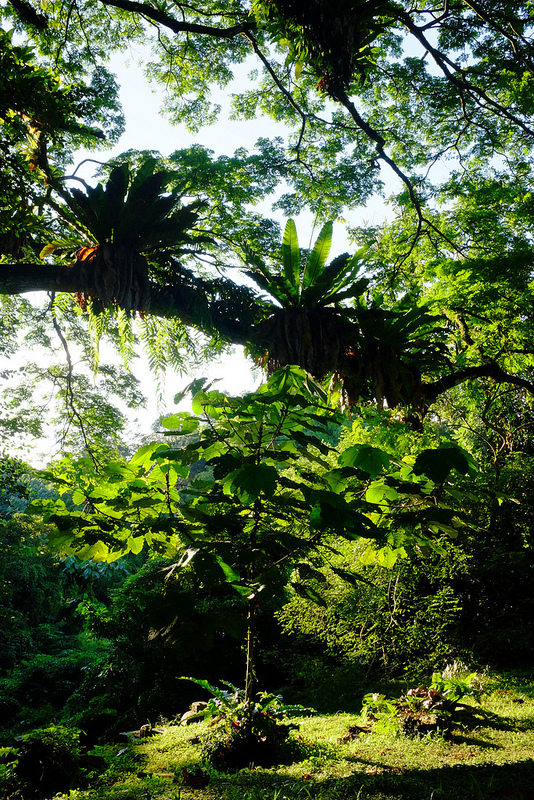
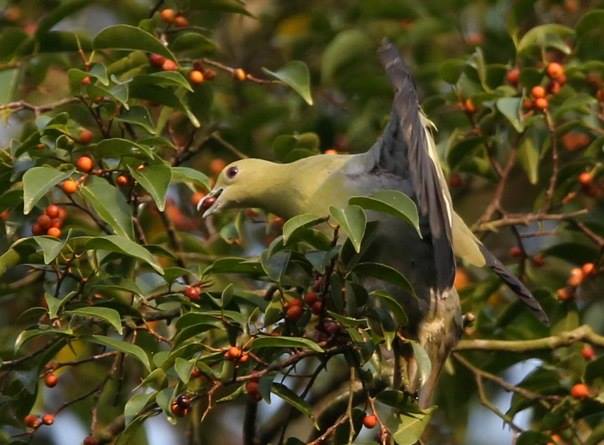
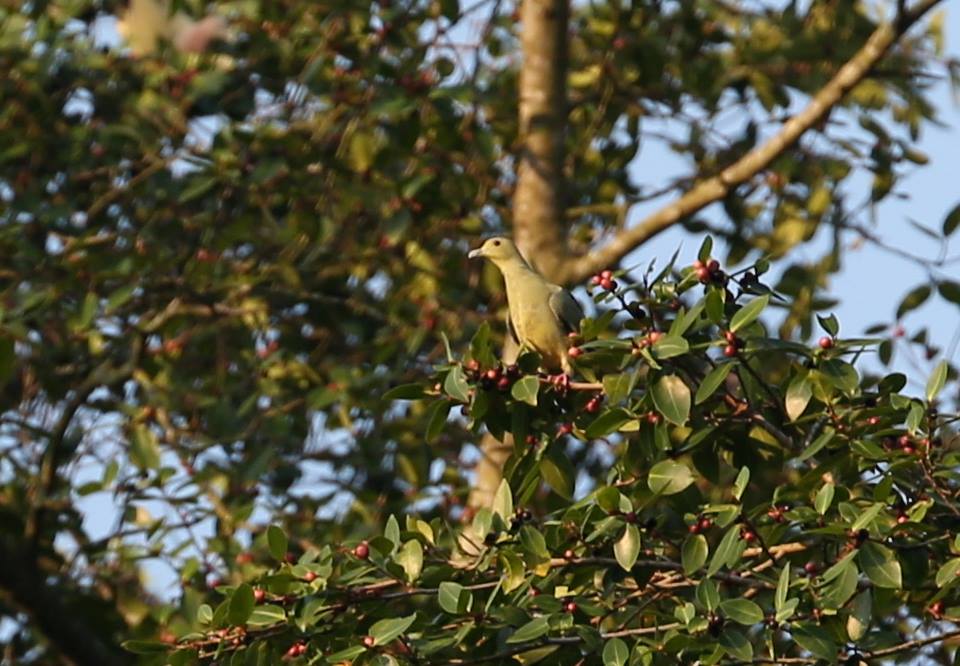
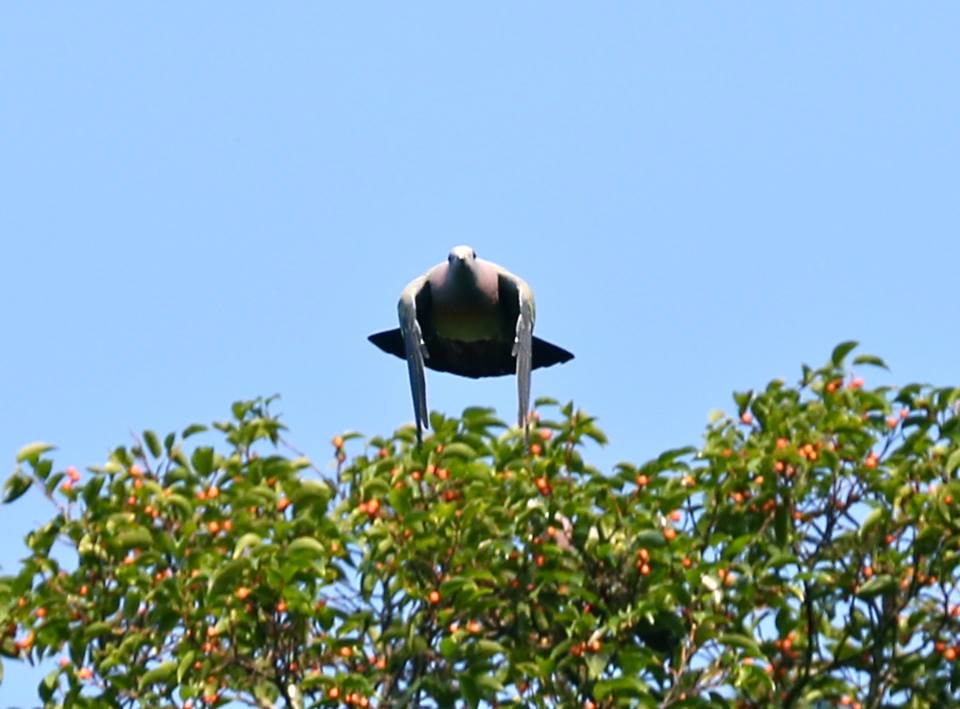
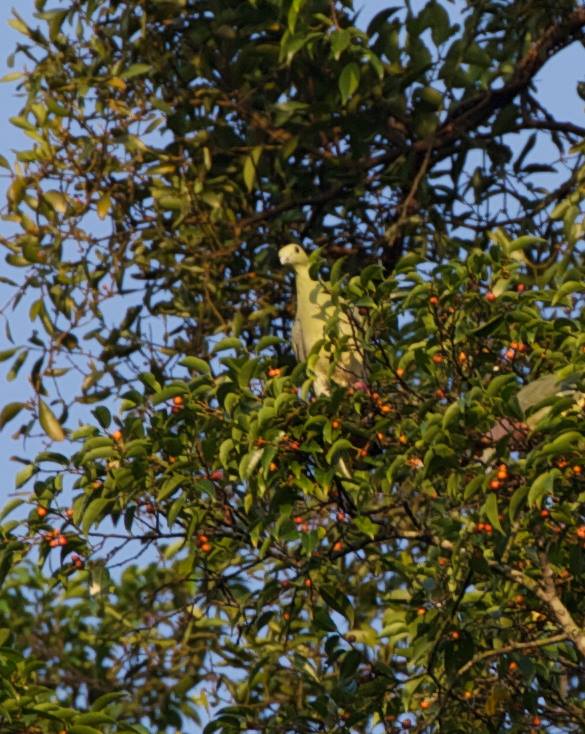
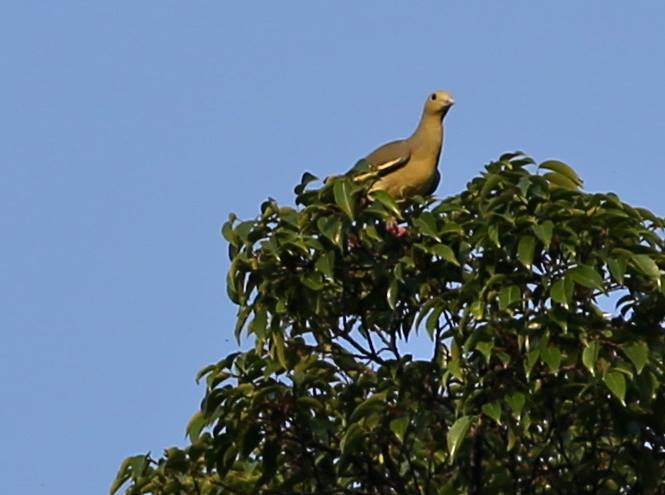
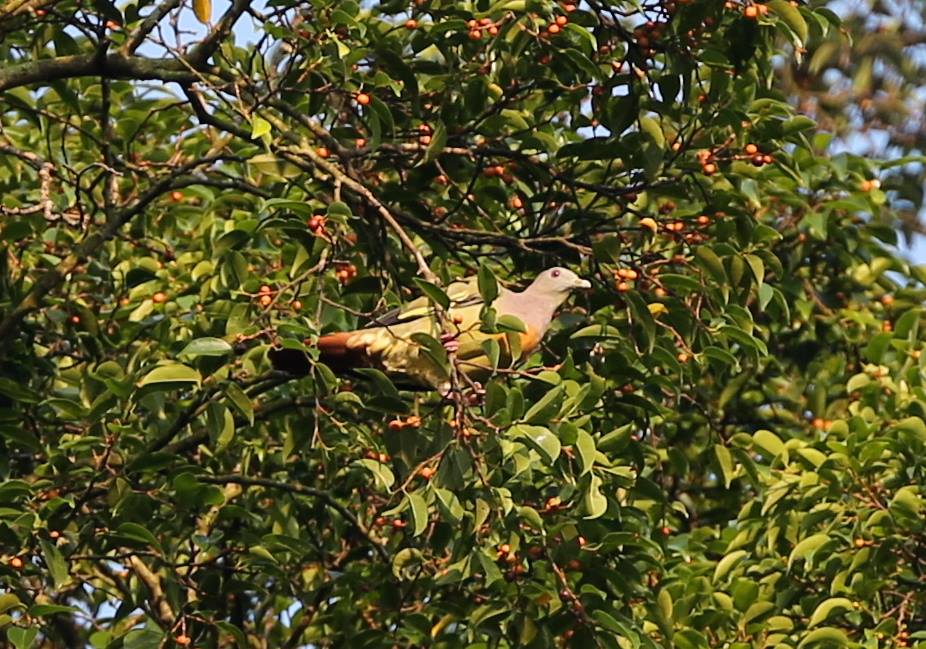
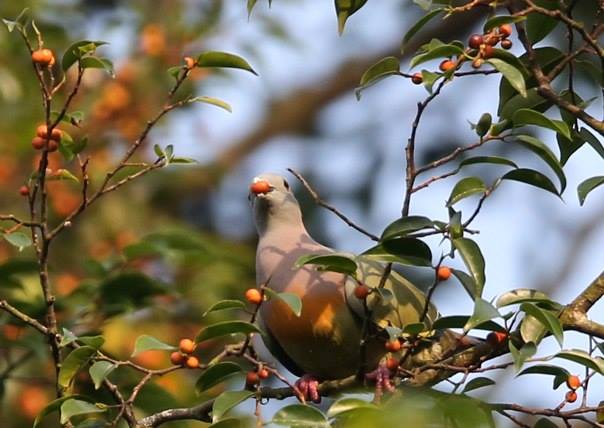
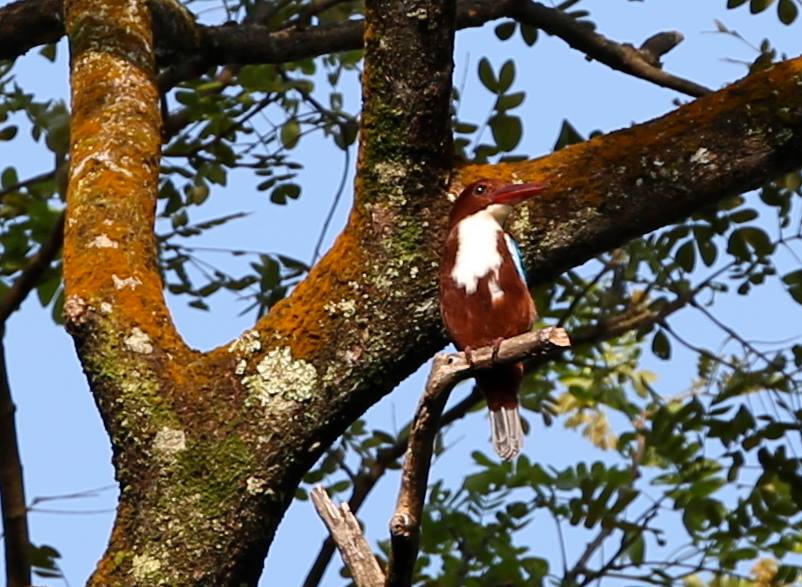
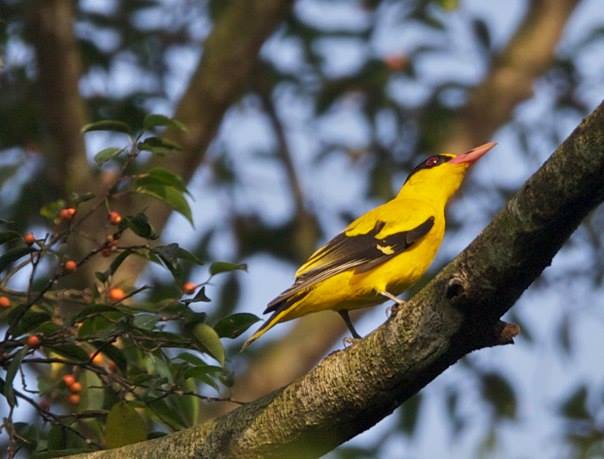
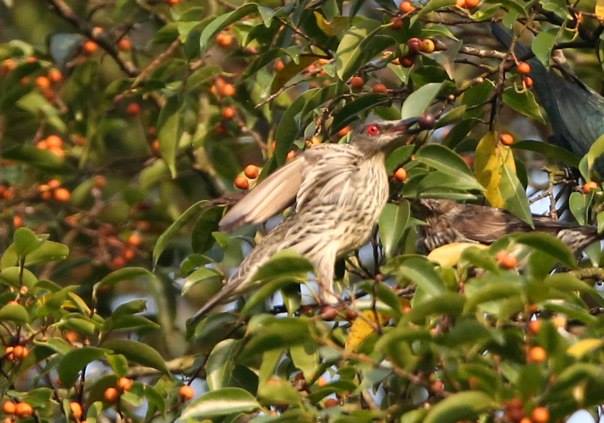
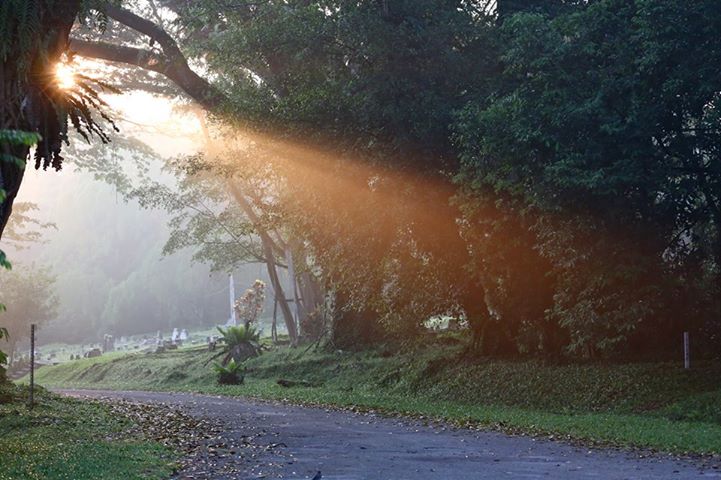
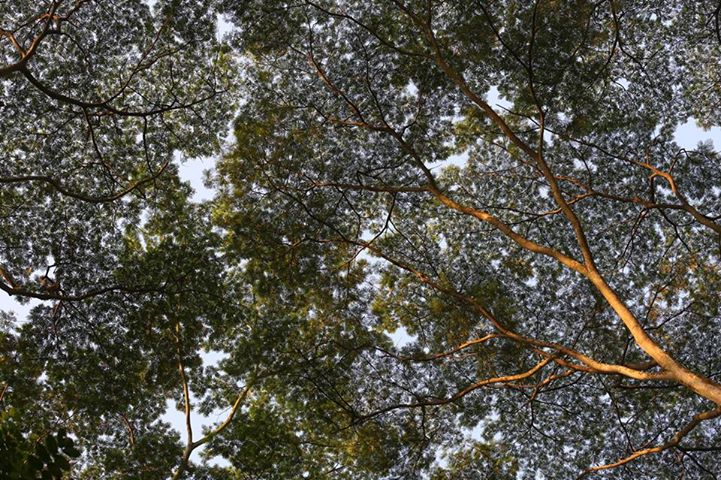
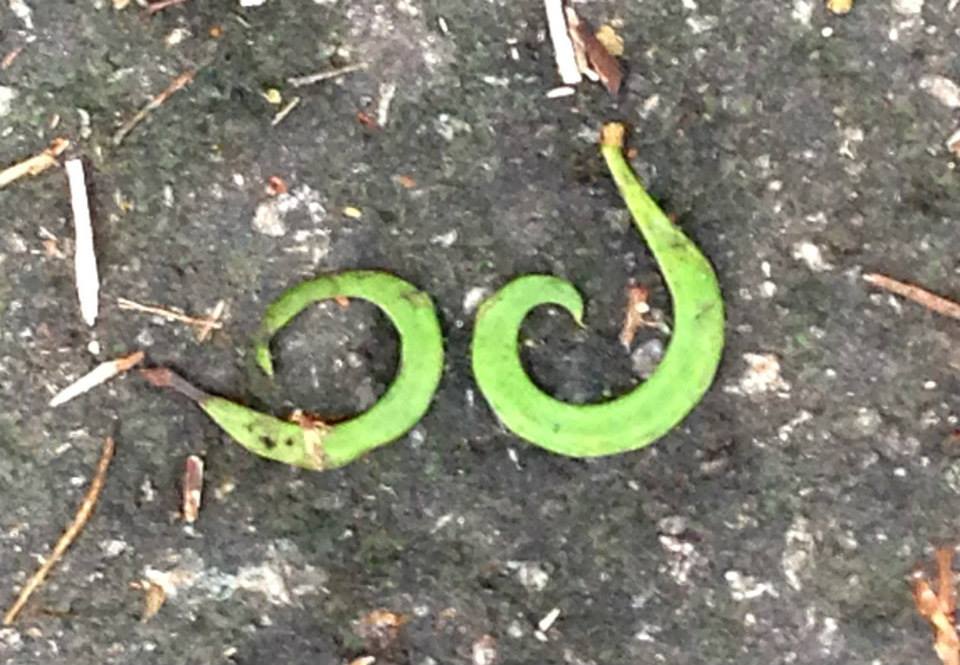
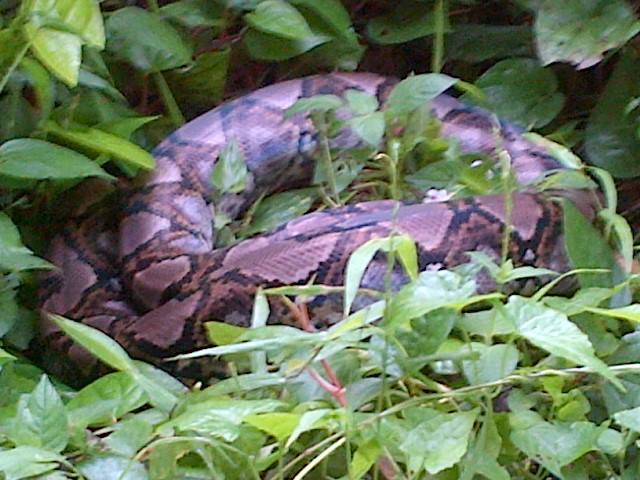
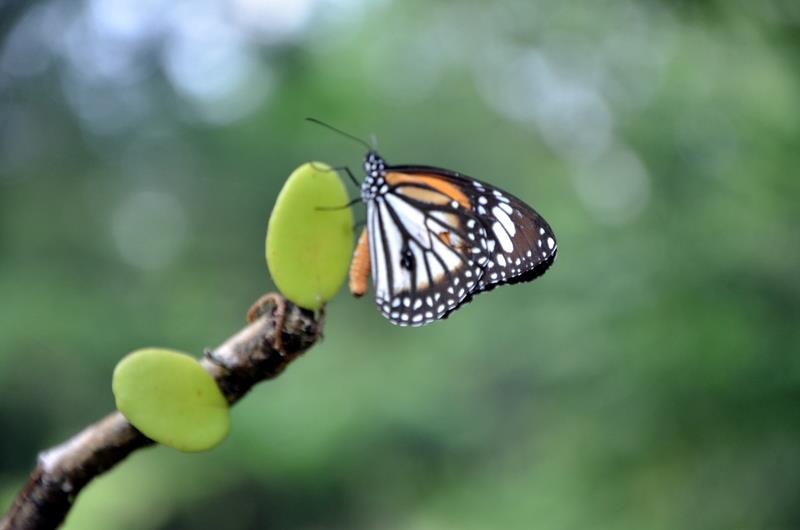

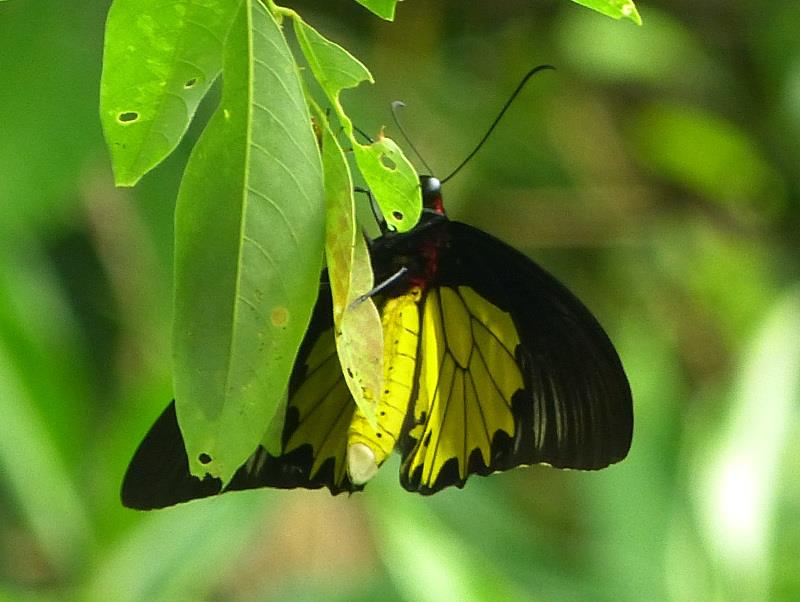
Recent Comments